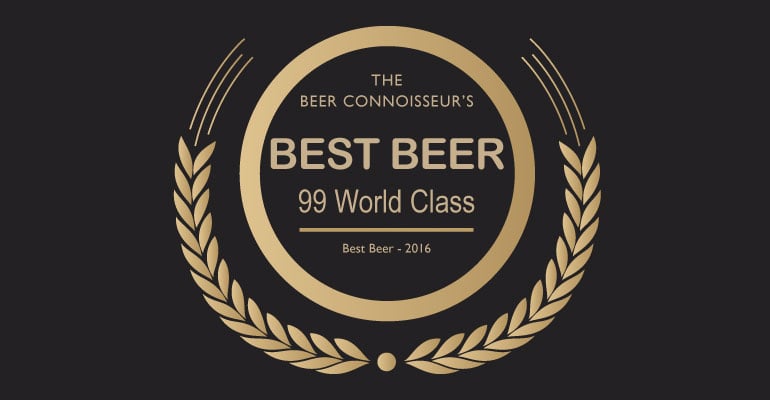Start 14-Day Trial Subscription
*No credit card required

Top Rated 100 Beers of the Year
With a new year upon us, there comes a time when we must ruminate on our past. For us, that means a discussion of the best beers we reviewed in 2016.
In 2016, a whopping 34 beers we reviewed attained the level of “world-class,” ranging from obscure Belgian styles to ubiquitous American IPAs. Congratulations to all the breweries that achieved this status; your efforts have helped craft beer grow into a joyous celebration of delightful flavors and artistic experimentation, where nothing is off-limits and rules are meant to be broken.
For each beer that attained a world-class ranking, we interviewed one of the brewers that made that beer happen to discuss some of the beer’s backstory. Also, the judges have revisited the world-class beers they evaluated, discussing various topics that revolve around the best beers they reviewed in 2016.
Without further ado, here are the Top 100 Beers of 2016.
1. (tied)
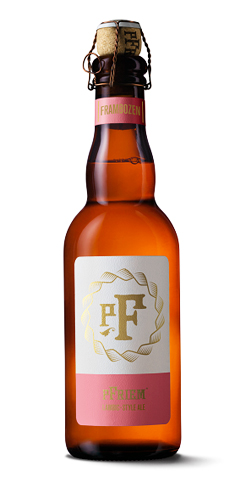
99
by John C. Tull
Frambozen
pFriem Family Brewers

Brewery Impressions
by pFriem Family Brewers brewmaster and co-founder Josh Pfriem
Who was responsible for this beer's recipe?
This beer has been a team effort. The idea of making Lambic-inspired beers at pFriem was a dream of mine many years before we opened, but our Head Brewer Gavin Lord has put years of work into getting this program off the ground. This beer is much more process-oriented than recipe-driven.
What sets this beer apart from other examples within the style?
Our usage of neutral French Oak barrels from wineries around us, microflora that is found here in the Hood River Valley, raspberries from Willamette valley all combined with the fact that we are a very modern brewery that makes high-quality lagers and hop-forward beers as well as funky and barrel-aged beers. All these things put together gives a large nod at tradition, but makes this a unique beer to pFriem.
What makes this beer truly World-Class?
That we put a ton of heart and soul into this beer. We do everything we can at each point of the process to brew this beer traditionally and in a very high-quality manner.
What is your favorite aspect of this beer (flavor, aroma, mouthfeel, etc.)?
The aroma on this beer is so fragrant and dynamic, the raspberries jump out of the glass. I could smell this beer all day.
How popular is this beer among your faithful fans?
2016 was the first year we released it and it was very popular. We plan to do a single release of this beer annually.

Judge's Second Opinion
by John C. Tull
There are beers and there are BEERS! This is a BEER! Do you want complexity? How about a blunderbuss of olfactory and tastebud madness exploding straight in your face! OK, now without all the violence… more like a bunch of roses and dandelions (or whatever gentle goodness comes to mind for you) floating out the end of that blunderbuss and tickling all of your sensations. Seriously, this beer packs an incredible diversity of aromas and flavors that challenges your nose and palate to catalog all the excitement playing out in those arenas.
It is difficult to strike a balance between sour and fruit in fruit-based sour beers. Often, a soured fruit beer ends up as dominantly fruit or sour, but the pFriem Frambozen nails balance between those competing characteristics and shows development of other characteristics in addition. Beyond the aroma and flavor complexity, the mouthfeel and balance are equally impressive.
All of this provides a world-class beer experience that is rare and profound. Truly, this is one of the best beers you can get your hands on today. Do not let an opportunity to try it slip by.
1. (tied)
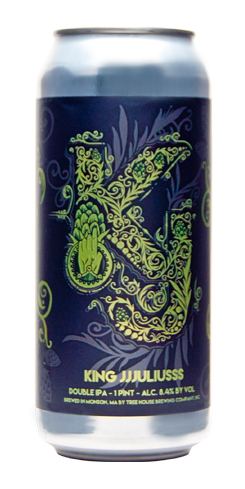
99
by Dan Preston
King JJJuliusss
Tree House Brewing Co.
View Beer
Read Review
Brewer Q & A
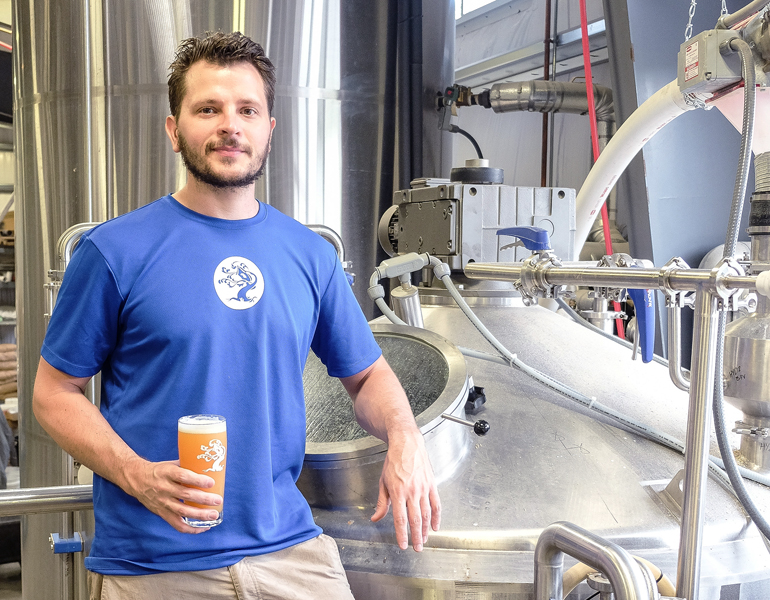
Brewery Impressions
by Tree House head brewer and co-founder Nate Lanier
Who was responsible for this beer's recipe?
I am (Nate Lanier) - co-founder and head brewer at Tree House.
What sets this beer apart from other examples within the style?
Its creamy mouthfeel.
What makes this beer truly World-Class?
I think ‘world-class’ is a bit overused these days. That said, I think any beer with a combination of bright flavors, gentle mouthfeel, and pleasantness throughout the glass deserves merit. This beer has all of those traits, and even a bit of je ne sais quoi, in my opinion.
How popular is this beer among your faithful fans?
Extremely popular! It’s also very popular in the brewery. We get just as excited to see it!

Judge's Second Opinion
by Dan Preston
Every once in a while something amazing comes along, and this blows it away. This isn’t just the best Double IPA I’ve ever had, its possibly the best overall beer. The biggest problem with it is that I can’t imagine I’ll ever have the chance to try it again, and if I did, that it will never live up to the first time. Getting to try this blind made for a truly memorable experience. I have high expectations for all of the beers we judge, but you never expect a white whale to end up in your glass.
I think the thing I’ll always remember the most with this beer is its aroma. It was so potent I could smell it before I even saw it. If it wasn’t for the sound of the can cracking open I may as well have thought a fresh bag of hops was dumped in front of me. The freshness and complexity was just truly astounding.
Tree House is an amazing brewery. I’ve unfortunately yet to make the trip, which is borderline sacrilegious for an in-state beer connoisseur, but I know many who regularly make the voyage to this local beer Mecca and have been graced to taste many of their wares. Pretty much everything that comes out of their taps is top notch, and yet the King still stands out mightily among them. All I can think about is getting my next sip of it. Attempting to make a remotely close clone is sitting strongly on my life’s goals.
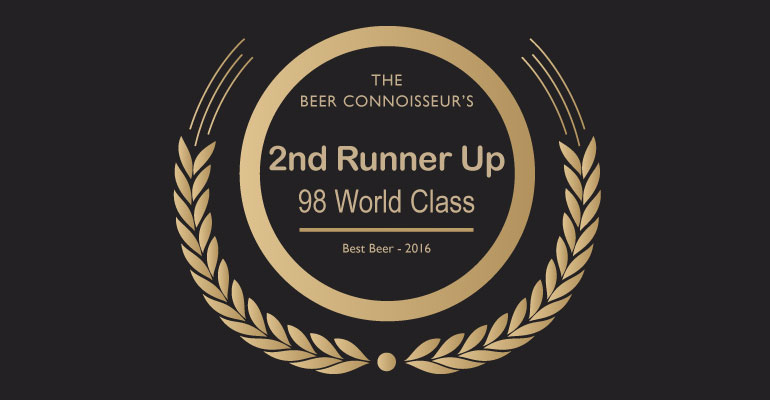
3.
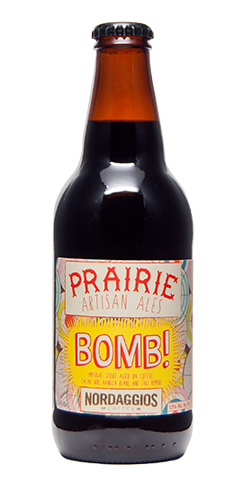
98
by Joseph Formanek
Bomb!
Prairie Artisan Ales
 Judge's Second Opinion
Judge's Second Opinion
by Joe Formanek
I first reviewed Prairie Artisan’s Bomb back in the spring when I had mentioned this would be a great winter warmer. I only wish I still had some bottles of this brew now that winter has arrived in full force here in the Upper Midwest so that I could personally evaluate that claim! I have had the privilege to review much of Prairie Artisan’s line of brews, and all of their beers demonstrate a high level of creativity and an apparent love for the craft of brewing delicious and remarkable beverages. Some stood out more than others, and, for me, Bomb rose to the top.
Personally, I am a true fan of the RIS style, particularly as brewed by U.S. Craft Breweries. I remember experiencing a variety of Russian Imperial Stouts during travels to the West Coast in the 1990s and at the 2001 AHA National Conference in LA, and I somehow lived to tell the tale! There are at least 2 thoughts on the style from people whom I have questioned. One group is looking for a somewhat clean, moderately malty, high alcohol, medium-bodied beer that is an easy drinker for the ABV. Others, of which I freely admit I am one of, look for a full-bodied, complex chewy beverage that can be savored and fully appreciated while pondering life’s mysteries sitting by the fireplace. For me, recipe complexity is an important part of the experience, with layers lying upon layers of flavors. Bomb accomplishes this quite remarkably, taking a solid rich RIS base and building a skyscraper of flavors upon that.
As mentioned in my review, Bomb’s amazing complexity delivers a massive explosion of delicious flavors and aromas that linger in the memory well after the drink is done. This is a Specialty beer with a RIS base, and drinking this brew is akin to drinking a chili chocolate coffee milkshake with a huge thick chewy body. A moderate vanilla flavor marries well with all of the flavors present. There is a touch of heat in the middle and finish, along with a moderate alcohol warmth, delivering layered mouthfeel factors to the equation. Incredibly, with all that is going on in this brew, there is an amazing marriage of flavors that add up synergistically.
4.

97
by Randy Scorby
Parabola
Firestone Walker Brewing Co.
View Beer
Read Review
Brewer Q & A

Judge's Second Opinion
by Randy Scorby
When I reach for an imperial stout, I’m looking for a big, rich and complex beer that is running on all cylinders. A thick and chewy beer with balanced roast malts, malt-derived esters, hop character and smooth alcohol warming. A light sherry oxidation from aging can also be quite complementary. When properly brewed, an imperial stout should envelope your palate with decadence, make your eyes roll into the back of your head, a moan escape your lips, and make everyone around you insanely jealous about your choice of beer. This style has roots back to the 1700s, and after dropping off for a short time it has made a resurgence back into the beer scene.
Firestone Walker 2016 Parabola certainly hits on all cylinders, like a finely tuned V-8. The intense, rich and complex aroma and flavor of this beer blends well with the bourbon barrel character from aging. The overall alcohol character is smooth with a pleasant warming that leaves you wanting more. The pure black, opaque appearance definitely looks the part. Whether you are a lover of imperial stout or just big, powerful beer this is a must for enjoying now or cellaring. Although one might not expect it, an imperial stout can be a great compliment to food, and not just to be enjoyed during the cold winter months.
Although I haven’t had the opportunity (yet) to visit this brewery, I still recall my first experience with their beer years ago and knowing then that I would continue to seek out future offerings.
5.
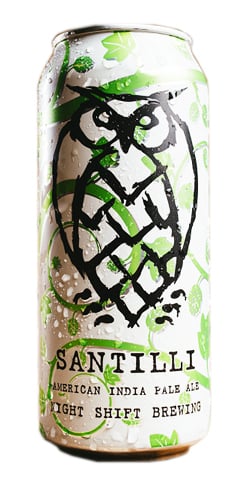
97
by Rick Franckhauser
Santilli
Night Shift Brewing
View Beer
Read Review
Brewer Q & A
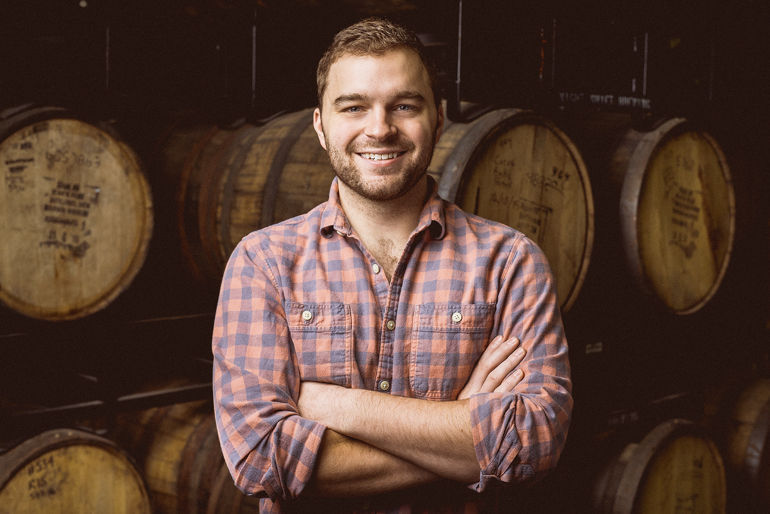
Brewery Impressions
by Night Shift head brewer Joe Mashburn
Who was responsible for this beer's recipe?
This beer was developed through a rotating beer series called Morph, where we change the recipe of the IPA with each new iteration. We used this as a tool to essentially crowdsource Santilli's recipe.
What sets this beer apart from other examples within the style?
We really like the fruity and piney hop characters that balance the soft malt characteristic. These two elements come together to produce a really well-integrated version of an IPA.
What makes this beer truly World-Class?
Our water profile helps those hops to really stand out as unique components of the overall beer, where they're full of both piney and sweet fruit flavors.
How popular is this beer among your faithful fans?
Santilli continues to be one of our most popular draft options and to-go options at our Taproom in Everett, MA.

Judge's Second Opinion
by Rick Franckhauser
It's no secret that American craft beer drinkers have become obsessed with hops. IPAs are everywhere and offered in a plethora of forms. Black, white, red, brown, Belgian, East Coast, West Coast, Session or Imperial, pick a style and add IPA to it. Hop expectations are ever increasing and brewers are trying to crank up the hop volume to eleven. Hey, if I can't smell the hops before I open the bottle why bother. What!? Less than 100 IBU's!?
Don't get me wrong – I LOVE ME SOME HOPS! It's just that I want to be able to enjoy my pint without losing the enamel from my teeth. It seems IPAs often suffer from their extremes and result in either a single pithy note or hops that seem to be at war with each other. As a showcase for hops, freshness is essential. A clean fermentation allows any fruit notes to come from the hops. For my money the best IPA's are a showcase for an array of complementary fresh hop characteristics. As I eluded to earlier, the bitterness is expected to be high but shouldn't be harsh, biting or astringent.
Fortunately for hop lovers, the brewers at Night Shift have honed in on unleashing a perfect blend of hops and providing a deliciously fresh and clean IPA. New World hops are providing us with a crazy range of aromatics and flavors ranging from the anticipated citrus of grapefruit and lemon, or the more tropical mango and pineapple to the herbal or dank. Santilli manages to bring out each of these characteristics in an interesting and balanced manner, which is no small feat. The malt base is there to smooth over the bitterness but never gets in the way of the hops. Each time you bring the beer to your lips you note a different and pleasing hop note. You can't really ask for much more in your IPA.
6.
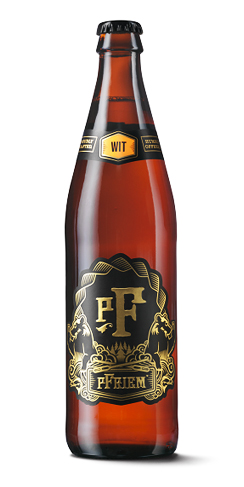
97
by John C. Tull
pFriem Wit
pFriem Family Brewers

Brewery Impressions
by pFriem Family Brewers brewmaster and co-founder Josh Pfriem
Who was responsible for this beer's recipe?
This was one of pFriem’s original core beers that we came to market with when we opened. I made the original recipe for this beer, but with all our beers we take a team approach to them and are constantly changing them. Max Kravitz, our Quality Control and Lab manager, keeps an extra-special watch on this beer, and he is always challenging us to make this beer better and better. It has been fun to watch this beer grow and change – it was a great beer in the early days, but it is fun to try to make it better each time we brew it.
What sets this beer apart from other examples within the style?
With all our beers we take a classic/historical approach to brewing them, but we always put a pFriem touch on them. The pFriem touch comes from letting our palates and our experience lead us to the future of the beer.
What makes this beer truly World-Class?
We put a lot of work into all of our beer – raw ingredients, process, equipment and experience. We try to do everything we can to make the best beer possible and we’ve never settled on a beer even when we are really happy with it.
What is your favorite aspect of this beer (flavor, aroma, mouthfeel, etc.)?
The beauty of this beer is the nuance of all these flavors. Making Wit is like making Pilsner, everything has to work together in harmony or the beer just doesn’t work. I love how this beer is creamy and full on the palate, yet finishes dry and effervescent.
How popular is this beer among your faithful fans?
Although we offer this beer year-round we make quite a bit more of it in the summertime. It’s a pFriem staple and frequent choice as a “go-to” beer.

Judge's Second Opinion
by John C. Tull
Pierre Celis is one of the great heroes of the beer renaissance that began in the post-World War II era. He was both a disciple and a leader of the Belgian brewing culture who single-handedly salvaged one of the great world beer styles, Belgian witbier. He migrated to the United States after leaving behind the remnant of his own witbier production brewery in Belgium, which became the Hoëgaarden Brewery, to produce the witbier and variations on that style in Michigan and later in Austin, Texas under the Celis Brewery moniker.
I was lucky enough to have been a young connoisseur of beer in East Texas (working on a bachelor's degree at the time) with a stable supply of the Celis products during the heyday of his American-based efforts. If only I had known how short-lived those wonderful beers were to be, I would have spent more time quaffing them. Sadly, he may have been both in the wrong place and at the wrong time as he never succeeded commercially in the U.S. producing the beer style that nobody knew as well as him.
Fortunately for us, the style persisted, revitalized, and even proliferated in Belgium. On a trip there some 16 or so years ago, I was amazed at the diversity of flavor and aroma expression in this style from the native witbiers. But I found myself always longing for Pierre Celis's witbier, and only Hoëgaarden seemed to really hit it, which was not surprising given his beer lineage. The Celis version of the style was always creamy, chewy, wheaty, oaty and additionally flavored from yeast characteristics and, modestly, from coriander and sour orange peel additions. This was the standard.
So I will admit that my basis for the perfect witbier is Celis White when I evaluate this style. The witbier from pFriem is a product that excites me in the same way: it presents a creaminess and complexity from the grains, both malted and unmalted, that excites without overwhelming the palate. The flavors and aromas from additions are restrained, but not masked, and the appearance and finish are very good as well. Overall, this hits the mark for my expectation in a witbier that meets the mark of the master: Pierre Celis. I believe he would like this beer very much as well.
7.
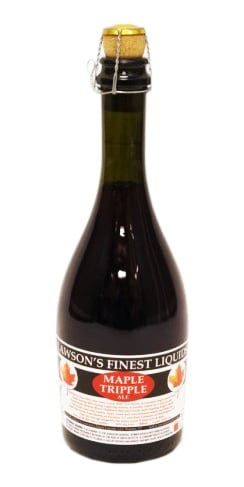
97
by Dan Preston
Maple Tripple Ale
Lawson's Finest Liquids
View Beer
Read Review
Brewer Q & A

Judge's Second Opinion
by Dan Preston
Last summer marked the first time I had made the trip up to the beer haven (heaven?) that is the Waterbury area of Vermont. It was my gift for my first Father’s day. Although I had never been before, I felt like I had due to the overwhelming amount of info given to me by friends that had made the voyage a number of times before. There’s just so many stops to make and unfortunately I have only one mouth (and liver). I tried to make the most out of it and do all that I could, and while I immensely enjoyed my time there, I know the next time will be a longer stay and go much easier and be even more enjoyable.
This is kind of the way I feel about this beer. Around the same time is the first time I tried the Maple Tripple from Lawson’s. A friend had made the trip up and offered to grab me a bottle. While it was still very tasty fresh, it also was a bit too much to handle. The amount of alcohol overwhelmed the rest and took away from the overall character (much like Waterbury, so much more to offer than amazing beer!). Fortunately, I got the chance to re-sample this same batch to judge and more time did it a world of difference. While the alcohol was still there, it was a much more manageable level and let the true beauty of the beer come thru and boy did it. It was like the full complexity of the deepest, darkest maple syrup enhanced by being made into a beer (make sure to visit a maple farm sometime, it’s incredible how different the grades taste). Just layers upon layers of rich sweetness. It was like a great dessert but without being cloying or heavy. This beer is truly a treat.
8.

97
by Jason Johnson
Alexander
Brouwerij Rodenbach
View Beer
Read Review
Brewer Q & A

Brewery Impressions
by Rodenbach master brewer Rudi Ghequire
Who was responsible for this beer's recipe?
Though I was responsible for bringing Alexander back, the beer was first brewed in 1986 and named after Alexander Rodenbach – one of the brewery's founders. At the time, it was brewed to celebrate the brewery's 150th anniversary. The latest iteration was brewed for the first time in 17 years due to overwhelming consumer demand.
What sets this beer apart from other examples within the style?
There's a uniqueness about this beer that is often imitated but never duplicated. It's brewed in the classic Flanders style, which we've perfected for nearly 200 years, and then aged in giant oak casks to give it its unique flavor characteristics.
What makes this beer truly World-Class?
That's truly subjective – but first it starts with balance. A properly balanced beer is essential, followed by a representation of the style. In Alexander's case, its uniqueness of brewing and flavor sets it apart, along with a balance and a lasting finish. We're flattered by the accolades the beer has received from leading organizations and beer professionals.
How popular is this beer among your faithful fans?
Immensely popular. We released a limited edition in 2016 after 17 years of absence and it sold out so quickly we needed to create more. We had requests from all over the world asking us to produce more – not just from our faithful fans, but from others who have never tried it before.

Judge's Second Opinion
by Jason Johnson
I remember this beer well. It was brought to me in a tulip glass and I remember making a remark about the deep ruby red color and the pink head. I knew I was in for a well-fruited sour. Rodenbach makes a very good sour in their Grand Cru, but the addition of cherries and a solid wood aging in oak foeders boosts this beer even more.
This beer was sent in a large 750ml so after the initial review was done we were able to enjoy a few glasses of this and focus on purely enjoying this beer aside from doing a stylized review. All technical aspects aside, this beer is one to simply be enjoyed if you don’t want to pick it apart. It’s top notch, full of tart cherry goodness, and will bring your friends together in just simple craft beer enjoyment. I can’t really say much more for this beer other than it’s a recreation of a legendary beer I never had an opportunity to try since I was about 12 years old when it first came out. But during its first incarnation it was among the cream of the crop for sours in an era when most people were still drinking only macro beers. So with this beer, you get a glimpse of what the beer was in its initial glory, and honestly it is one to enjoy.
9.
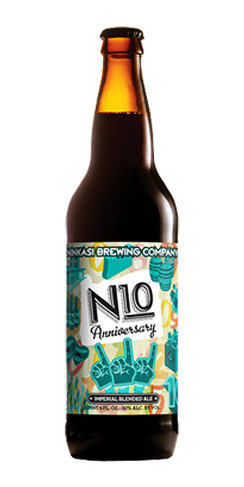
97
by Michael Heniff
N10 Imperial Blended Ale
Ninkasi Brewing Company
View Beer
Read Review
Brewer Q & A

Brewery Impressions
by Ninkasi head brewer and co-founder Jamie Floyd
Who was responsible for this beer's recipe?
We brewed N10 as a team. We wanted to pay tribute to some of our favorite beers and styles and blend them into a unique beer.
What sets this beer apart from other examples within the style?
There are many blended beers out there and this one is unique as it isn’t a single style – it is a blend of many styles. There are two different Double IPAs (one based on Total Domination – the first beer we ever brewed) a tribute to Maiden the Shade, a Barleywine that was aged for 2 years, and a big brash Imperial Stout that we made for this blend specifically. A portion of the stout was also aged in bourbon barrels. All three beers were brewed and blended to be 10% ABV in the end.
What makes this beer truly World-Class?
This beer has incredible depth and dimension. It has some of the aroma characteristics of a Barleywine with the port and sherry notes that lead to more intense hop aromas. The beer was dry hopped so that folks who opened them early had a treat that will subside when the beer ages. The flavor has a lot of the richness of the caramel, roast, biscuit and even a little smoke as we used a touch of peated malt in the mash. All of this is rounded out by the vanilla notes and other nice flavors from the wood.
What is your favorite aspect of this beer (flavor, aroma, mouthfeel, etc.)?
What I love about this beer is that it starts in one place and ends in another and I think that is a great attribute. The flavors and aromas in the front are not the same in the end. It is a journey just like the incredible 10 years we have been open.
How popular is this beer among your faithful fans?
I have heard many people say that the beer is a great representation of our culture and beer. It tells a story and many have followed it along with us and we are grateful to them for their contribution to it and this beer was made for them.

Judge's Second Opinion
by Mike Heniff
In October 2016, I had the pleasure to blindly judge Ninkasi’s N10, a blended beer project with 5(!) different strong ales in celebration of the brewery’s tenth anniversary. I scored the beer with a world class score of 97. A very intriguing aspect of this beer is the styles of beers that were blended: two Imperial Stouts (one bourbon barrel-aged), two Imperial IPAs, and a Barleywine. Blended beers are notoriously difficult to master and this blend exceeded on all fronts.
The first prerequisite for an excellent blended beer is excellent blend stock. Even with good beers, two big problems can plague blended beers: disharmony among the styles being blended and absence or masked aspects of one or more of the styles. The results of poorly blended styles are poor interplay of flavors and lack of melding of the different flavors. An example might be a blend of a porter with a pilsner. To the blend, the porter contributes prominent dark malt character. With the blend, the pilsner dilutes the porter’s greatest asset (the dark malt flavors). This type of blend can also demonstrate disharmony as the hop characters of the pilsner may not work well with the dark malts of the porter. Also, the strong malt character of the porter may just conceal the hops of the pilsner altogether, thus defeating the whole purpose of the blend.
The blend that Ninkasi has chosen with the N10 avoids all of these potential problems with blended beers resulting in a beer that is at least the sum of its parts, if not greater. At 60% Imperial Stout, it is no surprise that this opaque, pitch black beer has prominent dark malt characters of roasted, chocolate, and burnt (yet never sharp or harsh) malt. Blending in 25% Imperial IPA might be expected to thin the body and water down the caramel backbone that help tempers the inherent acrid character of dark malts. But, with a 60:25 ratio of stout-to-IPA, the IPA does not seem to negatively reduce the body or disrupt the dark malt balance; perhaps 15% Barleywine is enough to help to counter the effect of the lower malt contribution of the Imperial IPAs. Regardless, the body of the blend and the backbone behind the dark malts is not negatively impacted by the addition of the Imperial IPAs. Also, at 25% Imperial IPA, the hops are not assertive enough to create any interference or disharmony with the dark malt aromas but yet are displayed at a secondary level that adds a layer of complexity. The Bourbon and toasted oak manage to provide depth and complexity to the malt character despite being only added at 10% of the blend. Most of all, the plethora of flavors meld very well without any sharp or choppy transitions. In summary, the blend was very well done with the result certainly not less than the sum of its parts.
I hope we get to see N11, N12 and beyond at each anniversary of this great brewery!
10.
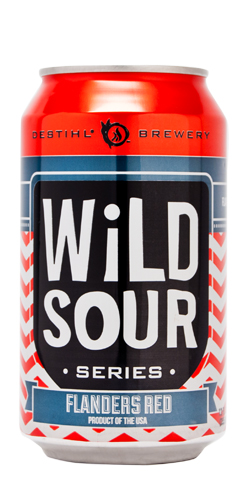
97
by Josh Weikert
Wild Sour Series: Flanders Red
DESTIHL Brewery
View Beer
Read Review
Brewer Q & A

Brewery Impressions
by DESTIHL founder and brewmaster Matt Potts
Who was responsible for this beer's recipe?
Ultimately, our entire DESTIHL brewery crew works collaboratively and is responsible for the result that is Flanders Red, although the recipe itself was created by myself.
What sets this beer apart from other examples within the style?
Our recipe is traditional and very true to the Belgian-style Flanders Red style, but our process is not. The result is a unique representation of this style with deep flavors of tart cherries, making it one of the more unique canned sours on the market. The dry, wine-like finish accentuates the complex malt profile and bright fruit notes are showcased to create a brilliant, deep red-colored beer that is a modern kettle-soured hybrid of an otherwise traditional Flanders Red. We also brew a more traditional Flanders Red and Flanders Oud Bruin as part of our award-winning, barrel-aged Saint Dekkera Reserve Sour Series.
What makes this beer truly World-Class?
Our Flanders Red (as well as all our other Wild Sour Series selections) is soured using our indigenous, wild microflora. To date, we have never purchased a souring culture from a lab, relying instead on our microflora naturally existing in Central Illinois to impart flavors unique to our local, Midwest environment. The result is a one-of-a-kind Flanders Red that plays up bold acidity against the complex malt backbone of this style.
What is your favorite aspect of this beer (flavor, aroma, mouthfeel, etc.)?
We love the deep red color, bright fruit notes (tart cherry, currant) and tart acidity balanced with a malty backbone and refreshing mouthfeel.
How popular is this beer among your faithful fans?
Very popular! American craft beer enthusiasts are, by their nature, very adventurous and love to try new beer styles. It is only natural that sour beers have now exploded in popularity, so much so that our Wild Sour Series represents about 60% of our production.
 Judge's Second Opinion
Judge's Second Opinion
by Josh Weikert
When people talk about modern sour beers, this is really the kind of beer they should be talking about. Dispensing with the rustic, nuanced, farmhouse quality of traditional sours, a beer like DESTIHL’s Flanders Red is a bright, loud, on-the-nose expression of sour and fruit flavors.
The tartness level is at the top of the scale, and there’s no doubt that this is a sour beer. Calling it a Flanders Red seems like a misnomer, since in tartness level it mimics the more clearly sour (and aggressive) Berliner Weisse, but the bright berry character brings it back into frame. It’s certainly a different kind of Flanders Red, but it’s in the family – like the black sheep of the family that’s young and brash, but well-meaning.
Maybe the best contribution that beers like this make to modern craft beer is that they bring sours out of the barn and into the cooler. Even the fact that it’s offered in a can puts it in a different position: no blowing the dust off of the bottle here. Crack one open, enjoy the intense flavors, and repeat. You won’t be sorry.
11.
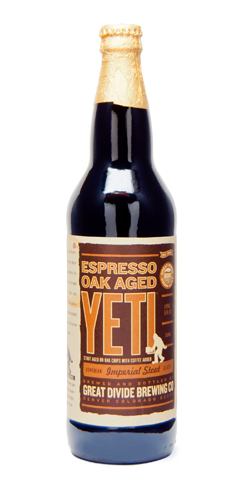
97
by Josh Weikert
Espresso Oak Aged Yeti
Great Divide Brewing Co.
View Beer
Read Review
Brewer Q & A
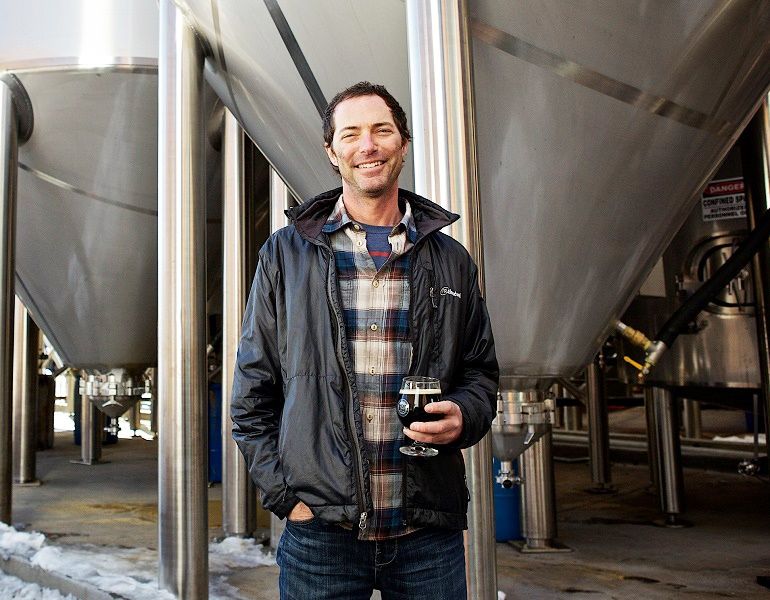
Brewery Impressions
by Great Divide founder Brian Dunn
Who was responsible for this beer's recipe?
This beer was a group effort involving myself and a few other employees as well as our friends over at Pablo’s Coffee. We worked for quite a while to get the blend right; the espresso was added to Oak Aged Yeti a little at a time until we found the perfect balance.
What sets this beer apart from other examples within the style?
I think the rich flavor of espresso really works well with the huge roasty notes of Yeti, making it a really well-rounded Imperial Stout. Using espresso roast instead of other roasts is an important distinction, the vanilla flavors from the oak make it more well-rounded, and the cold brew infusion method definitely sets this beer apart.
What makes this beer truly World-Class?
We took our time to get this right. We use high-quality ingredients, we partnered with a highly respected local coffee roaster, and we worked on round after round of recipe exploration until we knew we had finally nailed it. That perfect blend of espresso and beer makes it complex yet balanced with its vanilla oak character, roastiness and bold hop profile. These big flavors come together to make a world-class beer that’s incredibly robust yet surprisingly drinkable.
What is your favorite aspect of this beer (flavor, aroma, mouthfeel, etc.)?
I particularly like how well the espresso meshes with the roasted barley and chocolate malts of Yeti. There is something special about a fuller mouthfeel coffee drink. People like a substantial, hearty coffee drink, and when it’s also got that warming 9.5% ABV, you’re really on to something.
How popular is this beer among your faithful fans?
It’s definitely one of our most popular seasonal Yetis. The entire Yeti series has a serious following, and we receive numerous requests to make Espresso Yeti a year-round beer. This beer has also won numerous awards which shows that critics and fans alike are clamoring for more Espresso Oak Aged Yeti.

Judge's Second Opinion
by Josh Weikert
It’s become almost faddish to make an imperial stout and throw everything plus the kitchen sink into it, and for most breweries the result is something that’s less than the sum of its parts. Great Divide, on the other hand, makes several beers using their awesome Yeti as a base, and each one is as good (or better) than the last.
Which is why it was almost a surprise when the Espresso Oak Aged Yeti worked so well. Espresso? Certainly. Lots of coffee stouts out there. Oak? Of course. Nothing wrong with pulling some vanillin and tannin out of the wood to complement a good imperial stout. Both together seems like it should be fighting itself, but somehow it just doesn’t. It works beautifully. The rich chocolate notes of the beer pair with the dry roast of the coffee and are balanced by the touch of caramel and wood from the oak, with no one flavor stepping on the others’ toes. Bitterness, sweetness, chocolate, coffee, toffee, warming alcohols – everything is harmoniously presented.
And the best part is that this may well be a beer that gets even better with age! Certainly it has the complexity to experience shifts in the flavor profile, and with the ABV and ingredients at work there’s every reason to think that vertical flights (or even horizontal flights with other Yeti incarnations) would take us on a great culinary tour. Mostly, it’s that Great Divide produces great beer, and when they get it right they really get it right. That’s definitely the case here.
12.
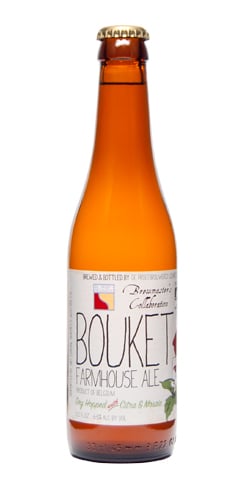
97
by Jason Johnson
Bouket
De Proef Brouwerij & Trillium Brewing Co.
View Beer
Read Review
Brewer Q & A
 Judge's Second Opinion
Judge's Second Opinion
by Jason Johnson
There are very few beers these days that completely blow me away. Bouket, a collaboration between Trillium and De Proef breweries was one of those beers where suddenly the heavens parted and a ray of sunshine beamed down upon me. I swear it was that good. The term “balance” tends to be thrown around quite a bit in the craft beer world, but this example was truly the epitome of a well-balanced beer. All the components of the beer, from the wheaty malt to the fruity hops and over to the sour funkiness were in harmony with each other without one overtaking the other – making the whole experience exceedingly pleasant. The flavors and aromas were bright, the color was beautiful, the head was long lasting. It was everything I could ask for in a beer. It was this combination of brightness and intangible goodness that lead me to believe this beer was about as fresh as they come when it came into my glass.
Generally speaking, I am not a fan of hops and Brett combined. Something in my wiring almost always makes it taste like a urinal cake smells. But this beer accomplished something I have never experienced, and that was an enjoyable exchange between hops and funk. Even my friend, who up the beer, agreed that this was one of the best-tasting beers he has experienced. In a way it’s a shame, because I have no access to this beer outside of the sample I was sent. But I honestly consider myself lucky to have had the chance to try it.
13.
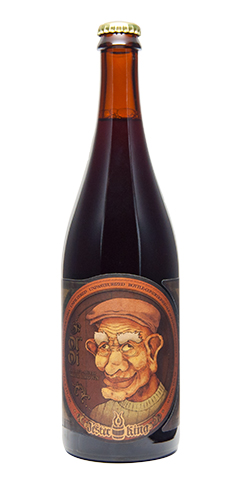
97
by Susan Ruud
Ol' Oi
Jester King Brewery
View Beer
Read Review
Brewer Q & A

Brewery Impressions
by Jester King founder and head brewer Jeffrey Stuffings
What sets this beer apart from other examples within the style?
I believe that what sets these beers apart or makes them unique is their connection to a specific time, a specific place and specific people. These beers incorporate well water, local grains, aged hops from our barn, and our mixed culture of native yeast and bacteria.
What makes this beer truly World-Class?
That's too kind! I'm proud of these beers because at the end of the day, I believe them to be balanced and drinkable. The malt, hop, yeast and acid character are all relatively in check.
What is your favorite aspect of this beer (flavor, aroma, mouthfeel, etc.)?.
For Ol' Oi, the malt character still comes through well despite being a beer that is fully attenuated and quite dry.
How popular is this beer among your faithful fans?
Both beers sellout at the brewery within a few weeks of release since our barrel-aged sour beers tend to be our most popular.

Judge's Second Opinion
by Susan Ruud
This is a beautiful beer all the way around. It started out with a lovely pour: nice tan foam that died a bit fast but left lovely lacing on the glass and a reddish-brown color that was extremely inviting. This Oud Bruin has an intense sour flavor and aroma with hints of cherry, sweet, delicate chocolate and nutty malt lightly tied in with hints of fresh oak and other dark fruits to balance throughout sampling.
Each sip of this lovely brew just draws you back in for more. Hints of light cherry esters shine throughout the aroma. The cherry notes along with some white grape and plum linger in the finish to perfectly offset the sourness. This smooth yet sweet tart beer was perfectly balanced between sour notes, sweet malt, barrel character and carbonation and was absolutely delightful. This is a wonderful beer for the sour beer lover, and a treat for any aspiring connoisseur.
This beer would pair wonderfully with roast duck or barbequed spare ribs, although it could definitely be enjoyed as a refreshing afternoon beverage on a hot summer’s day as the sourness and acidity are not overpowering – leaving this as a very smooth, easy-drinking beverage.
14.

97
by John C. Tull
Porter Culture
Hops and Grain Brewery
View Beer
Read Review
Brewer Q & A

Brewery Impressions
by Hops & Grain founder and president Josh Hare
Who was responsible for this beer's recipe?
The recipe for Porter Culture was created by myself about 4 years ago and went through a slow evolution on our pilot brewhouse over the course of nearly 2 years before we released it as a year-round offering.
What sets this beer apart from other examples within the style?
We brew this beer in the style of a Baltic Porter and utilize our house lager yeast strain for fermentation. What sets Porter Culture aside from other examples is its clean and complex malt profile. By using our lager yeast we were able to manage fermentation in a way that really minimized the ester production during fermentation enabling the raw materials to really shine through. We also use 100% Weyermann malt from Bamberg, Germany to deliver a rich, roasty chocolate flavor, and the addition of chocolate wheat delivers a smooth mouthfeel. We like to describe it as everything that you want in a Porter but with the finish of a Pilsner.
What makes this beer truly World-Class?
The hardworking brewers that craft this beer on a daily basis are what makes it truly World-Class. Without a World-Class team of brewers we'd never be able to make a World-Class beer. And we think it's pretty damn tasty!
What is your favorite aspect of this beer (flavor, aroma, mouthfeel, etc.)?
Hands down my favorite component of this beer is the finish. There is so much flavor, aroma and texture going on during the initial smell and taste, but what keeps you coming back is the clean, crisp finish. It also allows me to drink this beer by the pool in the middle of a Texas summer!
How popular is this beer among your faithful fans?
Our most loyal fans are those that are loyal to our Porter Culture. While it's not the most popular beer that we sell it definitely has the most passionate consumer base. In the rare event that we ever run out of it in our taproom, we hear about it!

Judge's Second Opinion
by John C. Tull
Baltic Porter is a bit of a nerdy style for those of us that were brewing and judging beer more than a decade (or two!) ago. I began to catch onto the style while looking for really unique beers (at the time) that would surprise me with their use of ingredients and fermentation techniques after I had become somewhat bored with the typical American and European styles that were dominated by a very limited variety of hops and grains at that time. I think it was David Sapsis that first introduced me to this beer style, as he was experimenting with historic styles that bent the rules on what a lager or an ale were "supposed" to be. I immediately grabbed onto these hybrid beer concepts, and I have never let them go.
Porter Culture exemplifies this awkward balance between old-world English Porter (with centuries of brewing persistence) and "modern" lager techniques that were initially perfected in Germany and Austria, but migrated northward into colder climates. Our best guess is that English influences and connections with Baltic nobility (and, perhaps, the people that served them) led to a cross-breeding of styles that matched the brewing climate, conditions, and wants of the region and clientele. Hops and Grain Brewery seems to tap into that historic moment and produce a very clean Baltic Porter in Porter Culture without overdoing the style, a common mistake in historic beer styles that were strong in their day, but almost pale by modern standards. This restraint and perfection in producing an accurate version of the style pays off in spades.
You will not likely be flabbergasted by this beer, nor should you be. In fact, that is exactly what should draw you to it. The dark malts are expressive, the yeast is clean and crisp, the flavor is rich but not overwhelming and the body and appearance are perfect. This is a beer that pushes the limits of a porter while simultaneously restraining it with the employment of lager yeast and cold fermentation. Overall, it is a beer that replicates a stylistic hodgepodge that was the product of necessity for a place and time. Porter Culture captures that stylistic expression honestly and cleanly, and becomes a must-try beer as a result.
15.
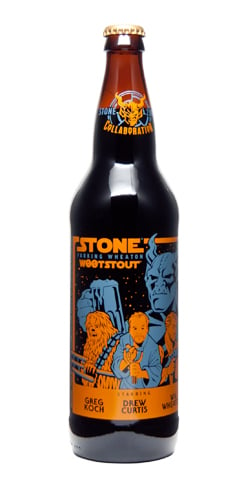
97
by Michael Heniff
Stone Farking Wheaton W00tstout
Stone Brewing Co.

Judge's Second Opinion
by Mike Heniff
It was a great opportunity to review Stone Brewing’s Specialty Wood-Aged Imperial Stout collaboration in August of 2016. I had tried this beer before a year earlier and it had easily been one of my new favorites before judging it blindly for The Beer Connoisseur. I bestowed a world class score of 97 upon this beer.
While I scored the beer with a very high score, in hindsight, the beer could have been scored higher. What really separates a 97 scored beer from that of a beer scoring a perfect 100? So, why do very few (if any) beers score a perfect 100? Is there no such thing as a perfect beer? Perhaps as soon as that 100 threshold is set, there will be a beer that is just slightly better? What was missing in the aroma and flavor that caused me to deduct 3 points? Perhaps a bit more bourbon would have been nice. Then again, too much bourbon and the beer loses balance and becomes hot and boozy, thus scoring lower. Perhaps a touch of hops would have pushed it higher. Then again, more hops may detract from the complexity of the malts, barrel, and pecans with again the addition causing the beer to be scored lower. Perhaps if you had to call the brewery in advance and drive by on a special day to pick up the beer, it would have been better (stated with author’s tongue in cheek). Regardless, I am at a loss for the 3 point deduction and I’m the one that judged the beer! As you can tell by my analysis (and a bit of sarcasm), this is a topic that I have thought plenty about among the thousands of homebrews that I have judged over the last 20 years. Why do judges set glass ceilings on beer scores?
Regardless, with a score of 97, this is a phenomenal beer and the slight of 3 points should not cause concern or distraction. What stands out most about this Imperial Stout is the phenomenal complexity, not just among the malts in the base style but also with the bourbon, wood and pecans. Just the complexity and richness of the base style alone is worthy of a very high score. The layers of malt character interplay throughout the aroma, flavor, and finish with flavors of roasted, chocolate, coffee and caramel (and with great depth to each of these individual flavors!). The bourbon, toasted oak, and pecans compliment the malt character perfectly; each of these elements stand out on their own, are not overpowering, and complement each other seamlessly.
Be sure to seek out future editions of this beer!
16.
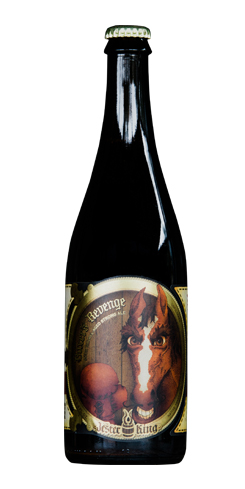
97
by Susan Ruud
Boxer's Revenge
Jester King Brewery

Judge's Second Opinion
by Susan Ruud
This strong, barrel-aged sour beer is nearly perfect. It pours dark amber in color and has rich, strong, sour and sweet flavors all rolled together. There is a beautiful off-white head and large lace left on the glass giving this beer a lovely appearance making you excited to dive and enjoy – but don’t guzzle this beer – it should definitely be sipped and enjoyed slowly so you don’t miss anything. It is extremely well balanced and is sour but not overly acetic, full bodied with hints of caramel, vanilla, oak and cherry, and makes you want to just keep sipping it forever.
Although this beer is high in alcohol it is so blended in you barely notice it. The yeast selection gives it some soft, delicate notes of tropical fruit, citrus and peppery spice in the background and pleasant, tart, earthy and rustic notes in the finish with a hint of winey character. A light barrel wood character comes through in both the beginning and finish, giving you a sense of a fine wine. This is a great beer to drink on a cold winter’s night in front of the fireplace. I could also imagine sharing this beer with friends around a fall campfire while eating s’mores!
Boxer’s Revenge has such a wonderful balance of the barrel aging, the farmhouse yeast character and malt yet isn’t overpowering so could be enjoyed with many meals from smoked salmon to grilled steaks. Definitely a treat for the senses!
17.
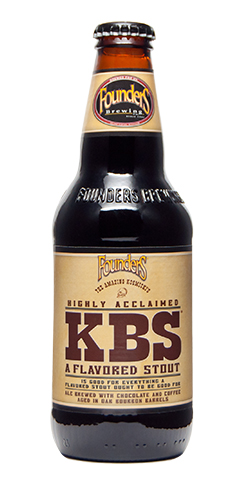
96
by Michael Bury
KBS
Founders Brewing Co.
View Beer
Read Review
Brewer Q & A
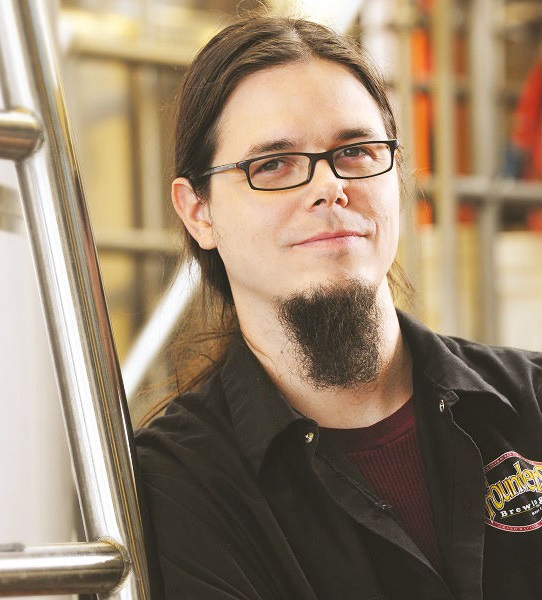
Brewery Impressions
by Founders head brewer Jeremy Kosmicki
Who was responsible for this beer's recipe?
KBS is based on the Breakfast Stout idea, which was a homebrew creation of Nate Walser and myself before we were even brewing professionally together. KBS is an imperialized, barrel-aged version of Breakfast Stout.
What sets this beer apart from other examples within the style?
There are a lot of flavors going on in this beer and they all get an opportunity to shine through without any of them being too dominant. This balance of flavor makes KBS extremely palatable.
What makes this beer truly World-Class?
Consistent quality and high ratings for the past 10+ years. It was one of the first of its kind, and I feel like it probably inspired a lot of brewers to try brewing barrel-aged stouts (often with chocolate and coffee, too).
How popular is this beer among your faithful fans?
Very popular. It only gets released once a year and people come from all over to celebrate its release-week events with us.

Judge's Second Opinion
by Michael Bury
Barrel-aged Imperial Stouts seem to be a dime a dozen in today’s craft beer market. They range from intense spirit infused, big, bold, boozy stouts to the sickeningly sweet, deep chocolate varieties along with everything in between. As a result it can be difficult to stand tall in a crowd with such diversity and bold flavors that can easily mask problems in either the underlying recipe or the process of barrel-aging. Founder’s KBS, though, sets the standard for this style.
KBS is supported by a high-quality imperial stout with a roasted quality that stops just short of acrid. In other words, it’s one of those in-your-face beers not meant for the light beer drinker. It also receives ample support from both bourbon and barrel. Since I’m personally a bourbon and scotch lover this beer hits on all of the attributes that I’d expect without compromising. All that’s needed is a nice fire with cooler weather and great company to share this beer; unless you’d rather make your friends jealous and withhold such a fine beverage from them. In the end it’s your choice but the consequences may be dire for one of those two scenarios.
Let’s be honest with each other though. Founders and quality are synonymous and that has been the case for quite some time. They take great pride in the product they produce and it shows in the details of this beer as well as their taproom in Grand Rapids, Michigan. It’s a finely decorated establishment with more seating than what you think would be needed for a brewpub. However, every time either myself or friends have been there we’ve found it bustling with activity to the point of bursting. It’s a good problem to have to ensure that there’s always Kentucky Breakfast Stout around.
18.
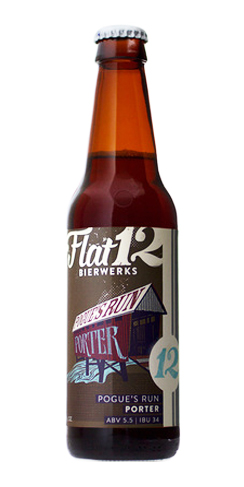
96
by Rick Franckhauser
Pogue's Run Porter
Flat12 Bierwerks
View Beer
Read Review
Brewer Q & A
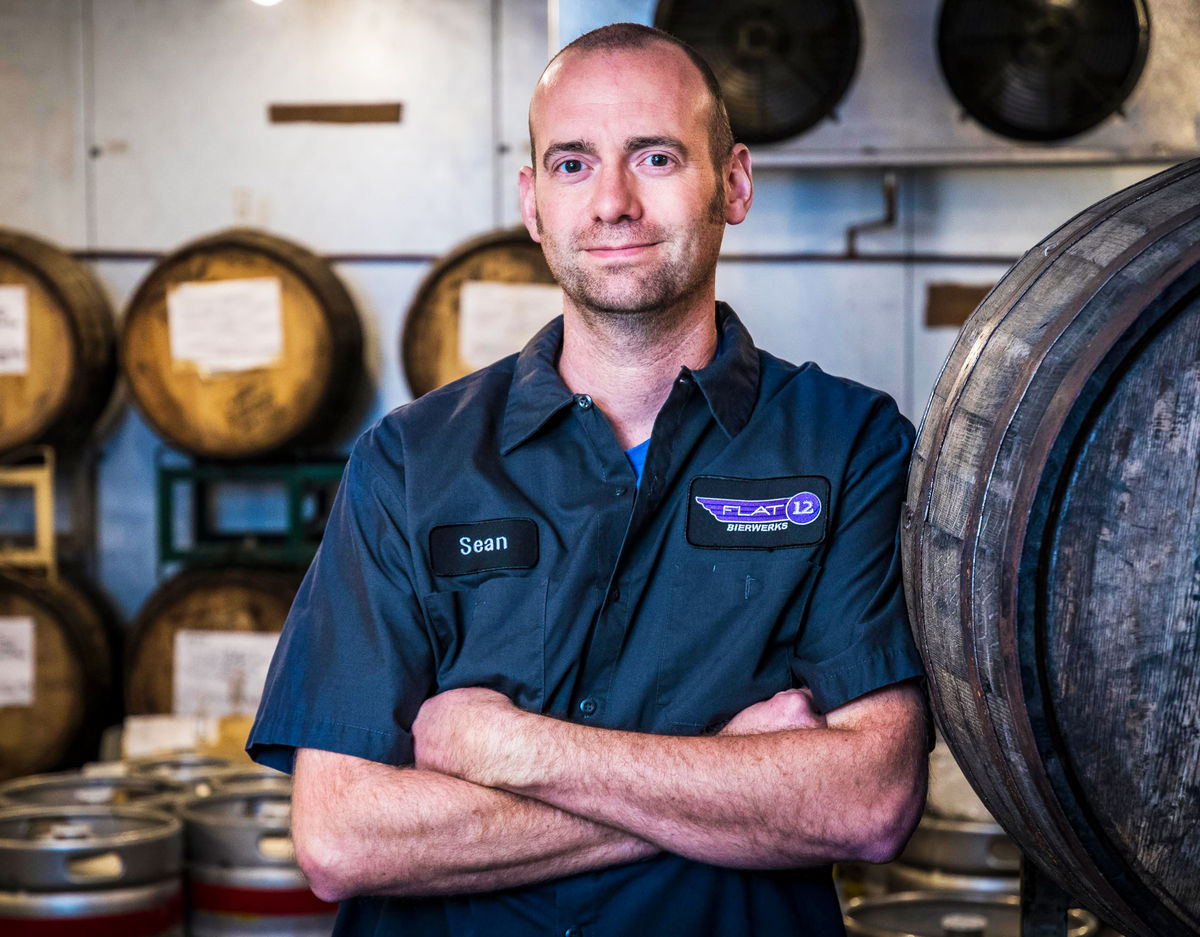
Brewery Impressions
by Flat 12 head brewer Sean Lewis
Who was responsible for this beer's recipe?
This recipe was developed by our founding brewer. It’s been perfected over time by our crew.
What sets this beer apart from other examples within the style?
Pogue's Run Porter is a traditional English Porter, but feels slightly lighter in body than most other beers of this style. It's also super balanced with an amazing finish, making it incredibly drinkable. It’s actually a crushable porter. You really can't have just one.
What makes this beer truly World-Class?
Top-notch ingredients, its approachability, smoothness, and balance of chocolate and roast all combined with a rich aroma make it the perfect porter.
What is your favorite aspect of this beer (flavor, aroma, mouthfeel, etc.)?
The flavor is out of this world. The aroma is rich and roasty with subtle chocolate notes. It has a hint of sweetness with a light but full mouthfeel and slightly bitter finish. Not too heavy. It's just right. I can drink this beer after I mow my lawn in the middle of summer.
How popular is this beer among your faithful fans?
Pogue's Run Porter has been one of our defining core beers from the beginning. We knew we had a grand slam the first time we brewed it. It’s a fan favorite and top-seller all year long.

Judge's Second Opinion
by Rick Franckhauser
I often find myself reminiscing about the first time I experienced a classic example of a beer style, then lament the apparent devolving of that beer to a shadow of its former glory. Further contemplation results in realization that that these classics have not been dumbed down but rather my tastes have evolved. If you are as old as I am, you’ve probably spent time drinking the mass-produced American lagers and the occasional cream ale. The first time I had a decent example of a German lager I couldn't believe my taste buds. Then came the British imports and a new world of beer appeared on the horizon. Belgian beers = mind blown! The American craft beer revelation reinvented many of traditional styles with copious hop additions. Time moves on and beer drinkers cry for more of everything. What once wowed us is now the mediocre. Perhaps I've come closer to full circle or maybe my homebrewing experience has helped me realize the skill involved in crafting the sublime.
Enter Pogue's Run Porter. Upon touching the glass to my lips, I get a flashback to that first sip of Fuller's London Porter. Not that Pogue's Run is a clone, but rather it emulates that experience of tasting a classic style for the first time. The beauty of this beer is its subtle complexities. Each of the aroma and flavor characteristics you look for in a great Porter are found and working harmoniously. None of the dry, harsh or burnt aspects often found in lesser examples are present here. This is a well-hopped beer, but not overly so and provides a rounded bitterness. Traditional earthy hop flavors season the malts and dark fruit esters. Many traditional Porters found there balance through the blending of young and old versions. Pogue's Run finds its balance through a well-designed recipe and the skill of the brewers at Flat 12.
19.
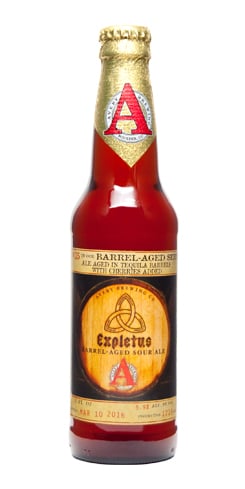
96
by Tracy Hensley
Expletus
Avery Brewing Co.
View Beer
Read Review
Brewer Q & A
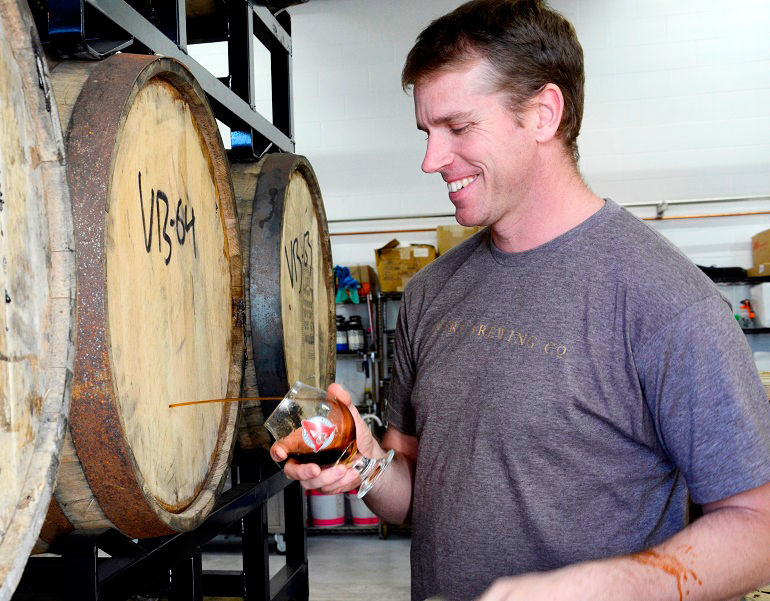
Brewery Impressions
by Avery chief barrel herder Andy Parker
Who was responsible for this beer's recipe?
I guess that would be me. The original idea for this beer was to make a sour beer that tasted like a Tequila Sunrise. So I started the painstaking research of making a Tequila Sunrise before dinner every night for a couple of weeks. I quickly found that I preferred the tartness of grapefruit juice to the sweetness of orange juice. I also researched grenadine, which is traditionally made with pomegranates. That caught me off guard, as the typical grenadines these days taste like cherry to me. But of course they're mostly just corn syrup and flavorings. I found a couple of small-batch grenadines made with pomegranate, and while they made some great mixed drinks it was more of an earthy flavor instead of the bright cherry that I associate with a Sunrise. So we decided to add some sour cherry to the beer before barreling, sour the beer in tequila barrels, then add grapefruit zest just before packaging.
A few months after barreling I brought a sample to a blind tasting at our R&D meeting. Almost no one mentioned cherry flavor, as it had mostly fermented out, but the table loved the beer for the huge tequila flavor and clean lactic acidity. We sat around the table and debated whether or not we should still try to turn it into a Sunrise by adding more cherry, waiting in the barrels for another few months, then adding the grapefruit. But the table loved it so much that we didn't want to risk leaving it for too long. When an entire table of incredibly picky, well-trained tasters loves a beer, you take it out, get it in a bottle, and get it to your customers immediately. So I guess I came up with the recipe, failed, and collectively we made something even better.
What sets this beer apart from other examples within the style?
That's a tough one, as there aren't many breweries making sours in Tequila barrels. That Tequila flavor and aroma can be pretty polarizing because very few people have experienced it. It's like the first time someone has a really funky blue cheese. I love giving this beer to people without telling them about it. The reactions have been all over the place... tequila, dill pickles, earthy, sweet tarts, cherry, charred oak, citrus, you name it.
What makes this beer truly World-Class?
It's all about the barrels. We might have the best Tequila barrel connection in the country. I'd been trying to get Tequila barrels for years with no success, but it just so happens that we befriended the good folks at Suerte Tequila. They're based in Boulder, but they're making their Tequila in Jalisco. When we asked them about getting barrels from them they instantly said yes. So we brought in four barrels and put a different beer in each one to see what might happen. Now they're getting us over two hundred barrels a year and putting a bit of Tequila back into the barrels before shipping to minimize how much they dry out in transit. When you work with your friends, good things tend to happen. We actually have some exciting projects in early 2017 that utilize these Suerte Tequila barrels, so fans should keep their eyes out for these.
What is your favorite aspect of this beer (flavor, aroma, mouthfeel, etc.)?
It seems simple, but that big Tequila flavor and aroma defines the beer for me. I've tried a silly amount of sour beers in my time and I've never had anything like it. I get bright citrus and what I can only now describe as "agave."
How popular is this beer among your faithful fans?
It has done really well among our faithful fans. The beer connoisseurs and Avery fans are more likely to know that we have one of the oldest barrel aging programs in the country and are willing to trust us with something this experimental. Even if the Tequila flavor and aroma throw them off a bit, the reviews almost always talk about how it's a quality beer and they've never had anything like it. Among industry friends and our Avery staff, it's a runaway favorite. I've had at least ten Avery folks tell me it's the best sour we've put out in years, and that's a huge compliment.

Judge's Second Opinion
by Tracy Hensley
Bourbon barrels are the usual suspects for barrel-aged beers in the United States. Brewers I work with state confidently there are generally accepted current standards for how to use them. Experimental beers are appearing everywhere, as brewers and breweries are looking to expand into barrel-aging projects either for the fun and challenge of it, profitability angle, brand extensions, and/or for garnering attention from the media/public. The experiments might be wild fermentations, unusual fruits/spices/grains, new hop strains, etc. As you have probably already experienced during your own beer tasting adventures, some of these beers are hits, others are misses. Big misses.
Avery’s Expletus is a hit. Seeing the obtusely titled, mid-teens price tag on a 5.9% ABV sour beer in a 12-oz. bottle made with cherries in a tequila barrel on the shelf would steer many buyers away. There is no guarantee the sour will not be too sour. The tequila barrel may make it too overpoweringly hot. For that price, in that size bottle, it’s a leap of faith, even if it is from a brewery as established as Avery, who have been making consistently good beers, with a recognized barrel program, and a well-regarded, limited-release, experimental barrel program for many years. Even when reading Avery’s website, where they proudly boast, “ANYTHING goes!” would not encourage me to be, as they put it, “as adventurous as we are!”
I say all of that, mostly as the devil’s advocate against why one would not try this beer. With 5,000+ breweries and counting in the United States, why not try someone else’s standard line-up? The point remains, when I tried Avery’s Expletus in May 2016, it floored me. For all of my naysaying, it was exceptional. Somehow Avery had made a low-alcohol beer and put it in a tequila barrel for just the right amount of time to avoid it becoming a tequila barrel bomb. The cherries are not cloying, the beer not sickly sweet, nor the sour overly puckering. It might sound odd but the beer is balanced. So I would say be adventurous.
Expletus broke many expected tropes at the same time – it is a beer to challenge those who claim they do not enjoy barrel-aged, fruit or sour beers. That being said, I re-tasted this beer in mid-December 2016. While Expletus was still a very good sour beer, much of the fresh cherry, floral and apple notes had waned. If you have this beer, pull it from your cellar and drink it now.
20.
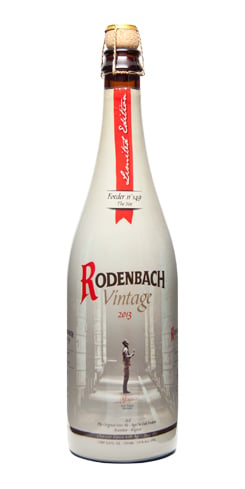
96
by Jason Johnson
Vintage 2013
Brouwerij Rodenbach
View Beer
Read Review
Brewer Q & A

Brewery Impressions
by Rodenbach master brewer Rudi Ghequire
Who was responsible for this beer's recipe?
Though I'm responsible for brewing it, proper credit needs to be given to our incredible oak foeders. We hand-select only the best foeder for our Vintage brew, and the liquid is aged for 2 years in the foeder.
What sets this beer apart from other examples within the style?
This can only be produced in limited quantities as we hand-select the very best foeder for the aging process. Every vintage is going to be different from the last, as the characteristics of each foeder are fully intertwined into the beer itself.
What makes this beer truly World-Class?
Again, this is a subjective response – but it all starts with proper balance. Do the flavors work in harmony with one another, each giving you a uniqueness from the appearance to the taste to the finish? We believe Vintage 2013 achieves that and we're honored by the awards and positive reviews we've received from leading organizations and beer critics around the world.
How popular is this beer among your faithful fans?
We've seen a rise in popularity with our vintage bottlings – and 2013 is no exception. Given its limited production, it tends to sell out quickly, but we're also seeing a lot of fans hold onto the bottles for years as they have great aging potential.

Judge's Second Opinion
by Jason Johnson
I really had a great run in the summer of 2016 with getting 3 beers in a row that were world class sours. Vintage 2013 is one of those beers, and possibly the most historically interesting. After the initial review, which yielded hints of cherry, some light caramel undertones, a little leather, some oak, and a light vinegar sourness it was the journey the beer took that made it most interesting to me. This beer was matured for 2 years in a giant foeder that is 59 years old. This foeder, named Old Number 149 was known for its unique character and specifically selected as the best performing foeder of the year. If you are not familiar with foeder, just think of it as a giant wooden fermentation vessel.
What’s most interesting is I didn’t know any of this at the time I reviewed the beer. These tastings are all done blind, with someone just telling me what style the beer is supposed to be. Could I tell you at that time that this beer was aged for 2 years in a special wooden foeder? Absolutely not. But what I could tell you was that there was something very special about the beer. It was well rounded, the flavors were melded together very well, and the beer was just downright tasty. Not to mention crystal clear and beautiful to behold. It was only after enjoying the beer for what it was that we had the added bonus of learning the interesting journey the beer took to get into our glasses. While it may not have been my top pick of the year for enjoyment (this one takes a close 2nd), it certainly was the most interesting and one of the beers I was most proud to have sampled.
21.
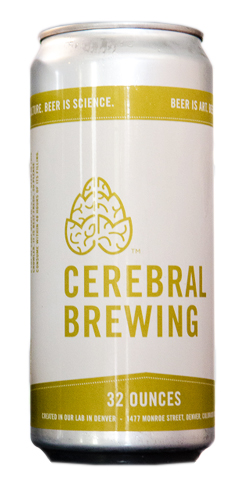
96
by Mike Castagno
Rare Trait
Cerebral Brewing
View Beer
Read Review
Brewer Q & A

Brewery Impressions
by Cerebral co-founder and head brewer Sean Buchan
Who was responsible for this beer's recipe?
I developed the recipe in an attempt to create our version of what I’ve grown to love from some of the great East Coast breweries. We draw pretty heavy inspiration from the guys at Trillium, Tired Hands and Tree House, but at the time when we opened, there weren’t any commercial examples of that style of IPA available locally. I worked on a few iterations before we opened on my 10 gallon system but ended up scrapping them and rebuilding the recipe from the ground up as the 3rd batch on our 10bbl system. Luckily for me it worked!
What sets this beer apart from other examples within the style?
We brew all of our hoppy beers in the “New England” IPA vein, which is inherently very different than the IPAs that have existed in Colorado for the past 20 years. Rare Trait itself is our house IPA and a tribute to some of our favorite hop varieties that have essentially changed the game for hoppy beer producers the past few years – Citra, Mosaic, El Dorado and Azacca.
What makes this beer truly World-Class?
Honestly I don’t know that I can answer that. I’m just happy that we have a large group of regulars that continue to drink Rare Trait as we strive to perfect it with every batch. I’m honored and humbled that Rare Trait was selected to make this list!
How popular is this beer among your faithful fans?
It’s nearly always our best-selling beer and accounts for about 30% of our overall production right now. We’ve done a few variants on it, including Mango Rare Trait and Double Dry-Hopped Rare Trait that went over well with our fans too.

Judge's Second Opinion
by Mike Castagno
This beer was a very pleasant surprise for me. Over the years, I’ve slowly migrated away from drinking IPAs almost all together in favor of other, lower-profile styles of beer in an effort to support breweries keeping and maintaining a diverse portfolio of beers in their lineup. As when I try any IPA, I typically approach it with a bit of skepticism, but with reviewing (and judging) an evaluator needs to keep an unbiased open mind. The fact that the beer came in a crowler (a 32 oz. can that is filled off a draft line then sealed immediately) made this endeavor of remaining unbiased even more challenging. Cans are notorious for rapidly oxidizing the beer they contain and filling one on draft couldn’t be any better, could it? Lastly, after the beer was poured for me, the intense haze brought up conversations I’ve heard scorning the so-called New England-style IPA that is very hazy, unfiltered and sometimes turbid in fact.
With this mountain of bias to overcome, the deck was stacked but the beer really knocked it out of the park! Packed full of what is now termed: a “juicy” hop profile – the creaminess of the beer, tropical fruit nose and smooth finish made this beer an incredibly enjoyable beer to evaluate and sip upon. Needless to say, that 32 oz. can did not go to waste. I now tell anyone going to the Denver-area to check out Cerebral Brewing. Very impressive!
22.

96
by Graham Barron
Classic Saison
Blackberry Farm Brewery
View Beer
Read Review
Brewer Q & A
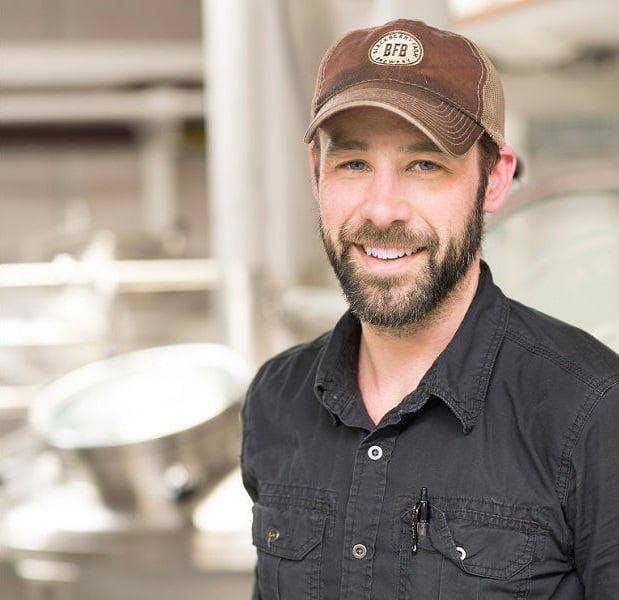
Brewery Impressions
by Blackberry Farm head brewer Daniel Heisler
Who was responsible for this beer's recipe?
The recipe for our Classic Saison was crafted by me.
What sets this beer apart from other examples within the style?
The simplicity of the recipe – relying on floor-malted Pilsner malt and traditional Noble hops – and the signature Belgian Saison yeast strain used for fermentation. We allow the beer to undergo a very slow, naturally warm fermentation, which lets the beautiful complexity of the yeast truly shine.
What makes this beer truly World-Class?
Our faithful respect for the simplicity and beauty of the traditional Saison style, aided by our state-of-the-art brewhouse and cellar. We were also honored to receive a Gold Medal for our Classic Saison at the 2016 World Beer Cup, further reinforcing what we already believed about the quality of the beer.
What is your favorite aspect of this beer (flavor, aroma, mouthfeel, etc.)?
The beautiful expression of complex flavors and aromas that can arise from such a simple beer when approached with care and patience.
How popular is this beer among your faithful fans?
Classic Saison continues to be our most popular flagship beer, and is the only beer we offer year-round.
23.
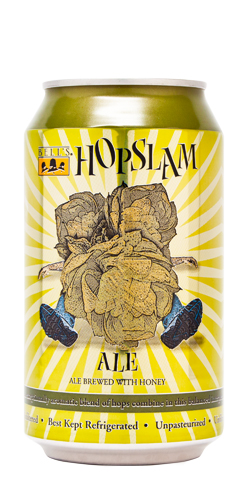
96
by Joseph Formanek
Hopslam
Bell's Brewery

Judge's Second Opinion
by Joseph Formanek
Hopslam IPA is one of those beers that brings much more to the table than expected. In a world of DIPA assault where the palate doesn’t stand a chance against the overwhelming one-dimensional character of the typically one-dimensional dank hop aroma and flavor featured in the brew, Hopslam delivers a more nuanced balanced approach that allows the beer drinker to enjoy and actually savor the depth and complexity of the beverage. Yes, the hop character throughout the aroma, flavor and bitterness is quite strong, but there is that something extra that is the hallmark of a well thought out and well-crafted brew.
I have had the distinct privilege to have visited Bell’s Brewery and Eccentric Café a great many times over the years, with Kalamazoo being an easy stop on a road that I travel quite frequently. I’ve also served beers from a booth adjacent to Bell’s at the Great Taste of the Midwest some years back, where I was able to marvel at Larry Bell being a master showman and thoroughly enjoying pouring his beers from magnum-sized bottles as attendees swarmed his booth. Bell’s beers have consistently been quite impressive, with the character of their Two Hearted Ale being my goal when I first set out to brew IPAs. Bell’s is well established as being one of the first wave craft breweries in the Midwest, and with that level of maturity that they have achieved, Bell’s offerings are typically multi-dimensional, having a fantastic depth of complexity. Hopslam IPA fits in well with this concept.
While dank hop character dominates, citrus and piney hop notes play an important supporting role in the aroma. There is also a light background of malt aroma with a touch of sweetness and alcohol, as this is a 10 percent ABV brew after all. As I mentioned in my initial review, the flavor packs a solid bitter hit (as expected with a 70 IBU IPA) along with piney, citrus and dank hop character. The moderate base malt backbone balances out the hop expression quite well. A clean alcohol note is also very evident and warming upon the swallow. The brew has a solid medium body, with a slightly sweet, but not cloying finish. The aftertaste delivers a lingering marriage of hop and malt flavor, and is dry enough to prepare the palate for the next flavorful sip. Overall this is a very enjoyable drink that delights the palate at many levels.
24.
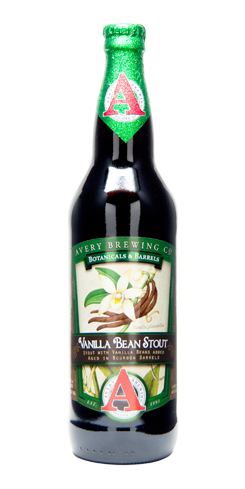
96
by Tracy Hensley
Vanilla Bean Stout
Avery Brewing Co.
View Beer
Read Review
Brewer Q & A

Brewery Impressions
by Avery chief barrel herder Andy Parker
Who was responsible for this beer's recipe?
Vanilla Bean Stout is a group effort after two decades of brewing stouts. The origin of this beer was a small project we blended for our taproom three years ago called Khodynka. We were sitting on a handful of bourbon barrels filled with Out of Bounds (a roasty and dry American Stout) and a handful of bourbon barrels filled with Czar (non-roasty Imperial Stout). We made a number of blends between the two before settling on 2/3 Czar and 1/3 Out of Bounds, but in the blind tasting someone brought up the idea of adding whole vanilla beans. We did another big blind tasting with and without the vanilla, and you can tell which one won. After Adam Avery came in to work one day claiming that he drank three pints of it at the taproom and that we had to make it on a larger scale, we combined the Czar and Out of Bounds recipes as best we could and started brewing.
What sets this beer apart from other examples within the style?
The balance. The goal of this beer wasn't a bourbon bomb or a vanilla bomb. It was to balance the malt bill, high ABV, and charred oak and vanillin compounds from the barrel and the vanilla beans then do our best to make it as consistent as possible from batch to batch. We're on batch four already, and considering the variety that can be found from barrel to barrel and from crop to crop, I'm very happy with it.
What makes this beer truly World-Class?
The attention to detail. We felt pretty confident that we could nail the malt bill and we have a decade of experience in bourbon barrel aging, but we had never really researched vanilla. We have an established sensory program, so I started bringing in a handful of vanilla extracts and a dozen whole beans from different suppliers and different geographic regions. Over weeks of blind tasting with the entire production staff we saw that the extracts were quickly kicked out in favor of whole beans. And the variety of flavors in the beans was eye-opening. Over half of the beans infused the base beer with plastic, medicinal or ashtray flavors, and beans from two different suppliers from the same region tasted completely different. We were able to narrow it down to a handful of great ones, but each crop will be different and we'll have to reevaluate every year to make sure we're doing it right.
What is your favorite aspect of this beer (flavor, aroma, mouthfeel, etc.)?
The balance of everything. I can smell vanilla and charred oak. I can taste a hint of roasted barley but it never becomes astringent. It has some sweetness, but it's not cloying. It has a hint of caramel from mild oxidation, but we take it out of the barrels before it can take on the soy sauce oxidation that can kick in. I rarely drink Imperial Stouts anymore, but drinking an entire bomber of this isn't a challenge. I'm pretty sure there's a beer gnome in my house that keeps finishing the glass for me.
How popular is this beer among your faithful fans?
I think it's doing pretty well... I think a lot of our fans love our super high ABV (over 15% ABV) beers, but they're happy to have something in the 10 percent range too. It's strange to think of a 10 percent ABV beer as easy-drinking, but it works. And because we're doing this in larger quantities, we can keep the price down. It's a true Imperial Stout aged in 100 percent fresh bourbon barrels every time and you don't need to break your piggy bank open to get a bottle.

Judge's Second Opinion
by Tracy Hensley
As a brewer on the Green Dragon Brew Crew at Rogue’s Eastside Pub and Pilot Brewery in Portland, Oregon, I am no stranger to barrel-aged beers. Every January we celebrate “Big Ass Beer Month” by releasing an appropriately named “Big Ass Beer” each Wednesday. January’s 10+% ABV beer line-up is traditionally dominated by fabulous barrel-aged beers of various types.
Our experimental nature allows us to age a beer until it is ready to be served. Aging can make or break a big beer, and that makes Avery Brewing’s Vanilla Bean Stout a pleasant surprise.
Barrel-aged beers often suffer from being too hot and too tannic. Two problems of creating a strong beer is that they do not age quickly nor hold up against the bitter tannins drawn from the barrel. More often than not, a high alcohol, barrel-aged beer lacks synergy. This lack of balance may derive from recipe formulation issues or unintentional souring, but also from being released too soon. Time can soften those tannins and smooth out harsh alcohol notes.
When brewers add additional ingredients to barrel-aged base beers, in this case a stout, they often seem to be covering up harsher alcohols and drying tannins. This results in cloyingly sweet, and/or jangly/muddled aromas and flavors where intensity is the only element of interest.
That is where Avery’s Vanilla Bean Stout shines, showing what a high alcohol, barrel-aged, spiced beer can be. The example I tried was 11.5% ABV yet the vanilla notes from the vanilla played off of the bourbon barrel nicely. The mouthfeel was smooth, while still showing adequate drying that one expects from a barrel-aged beer. Returning to synergy, the sum of the Vanilla Bean Stout was greater than its parts because of the integration of layered vanilla and chocolate notes that one could savor and analyze. One could also just ignore all the effort and enjoy this beer, go back to the beer store and grab another one.
25.
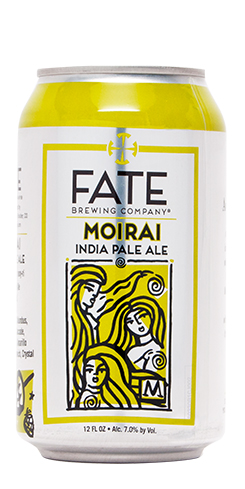
96
by Randy Scorby
Moirai India Pale Ale
FATE Brewing Company

Brewery Impressions
by FATE head brewer Jeff Griffith
Who was responsible for this beer's recipe?
I was.
What sets this beer apart from other examples within the style?
The El Dorado hops set this beer apart. It's an approachable IPA that incorporates classic American "C" hops (Chinook, Columbus and Cascade) bringing citrus and pine components but also the new world El Dorado hop. The addition brings a new layer to the style."
What makes this beer truly World-Class?
A few things: 1) using the hops as mostly flavor and aroma contributors, 2) keeping the upfront bittering lower and smoother and 3) letting the late addition hops give the perception of bitterness.
How popular is this beer among your faithful fans?
This is our most popular beer both in-house and out-of-house.

Judge's Second Opinion
by Randy Scorby
“After a difficult day at the White House I prefer a finely crafted American IPA, with fresh and bright hop character befitting a President.”
Abraham Lincoln, August 1863
Yeah, OK, Abraham Lincoln never said this, but I’ll bet if he’d had a chance to sample a quality American IPA he would have. Not all Americanized foreign beer styles have been overly successful, but this interpretation of an English style ale showed the world what hops are truly used for. Historically, an American IPA showcased Cascade or other floral and citrusy hop varieties, but can now include many more aroma and flavor characteristics, such as resin, pine, tropical fruit, stone fruit and any other U.S. or New World hop attributes. A fresh and bright hop character is always desired, as well as a prominent hop bitterness level that remains smooth throughout. It also requires a drier finish that will allow the hops to pop. Secondary characteristics such as light malt, fermentation derived fruity esters, and restrained alcohol help to create a balancing affect to the hops.
FATE, a relative newcomer to the craft beer scene, has done an exceptional job of creating a hop-forward IPA with a fresh and bright hop character that even Honest Abe would have loved. The hops strongly push toward orange citrus in the aroma and flavor and are balanced by light bready malt, mixed berry esters and alcohol warming. The prominent hop bitterness never turns harsh and creates a very refreshing and thirst-quenching finish and aftertaste. All of the primary and secondary characteristics line up nicely to create a pintable craft beer that pleases the palate and leaves you wanting more. Even if you are not a fan of unrestrained and pronounced hops, you may be after quaffing this beer.
26.
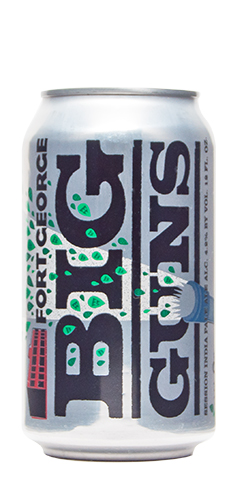
96
by Tracy Hensley
Big Guns
Fort George Brewery
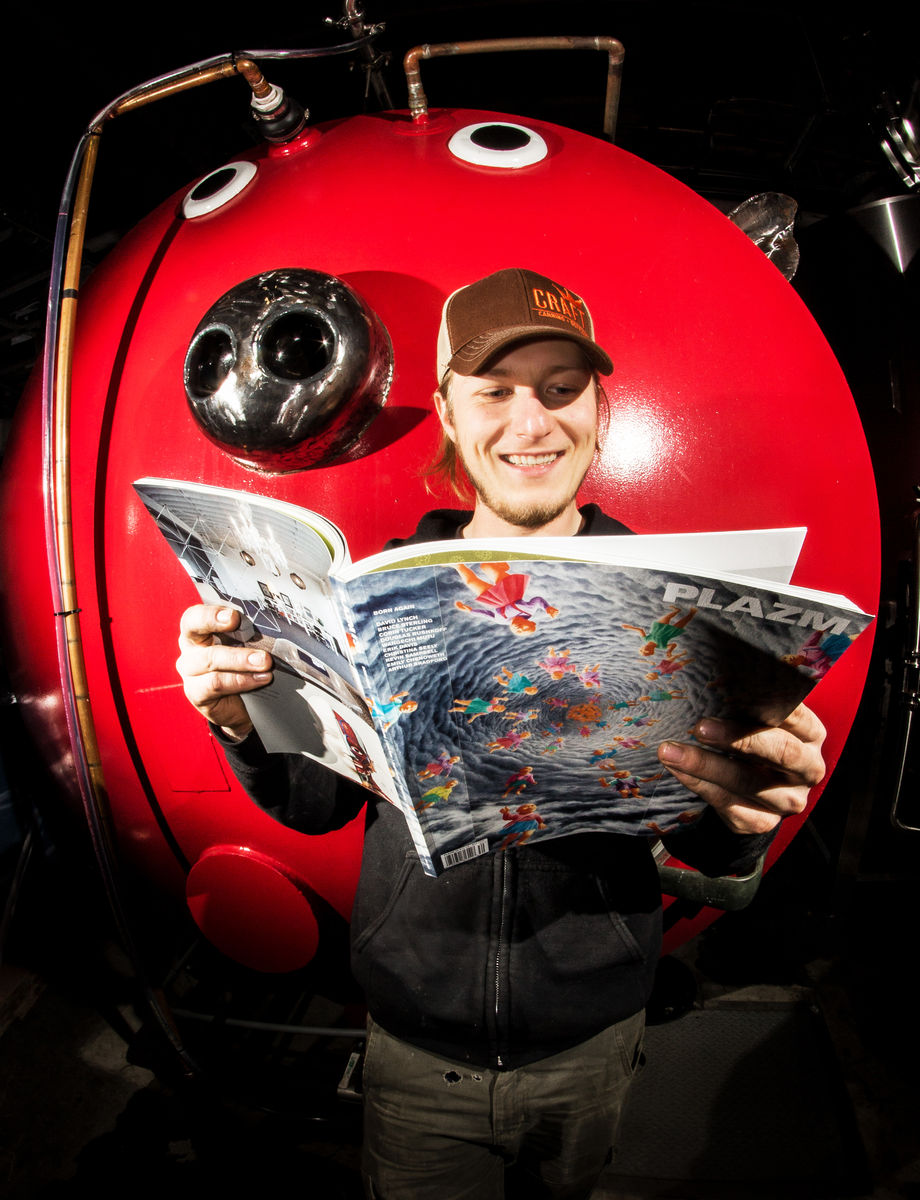
Brewery Impressions
by Fort George head of production brewing Michal Frankowicz
Who was responsible for this beer's recipe?
It was originally part of our Sweet Virginia Series, named after the 8.5-barrel brewhouse in the back of the pub. This series allows a different brewer to develop, name and brew a beer. We release a new beer at the start of every month – draft only.
What sets this beer apart from other examples within the style?
What sets Big Guns IPA apart is that it is a Session IPA (only 4.2% ABV), but it also uses a mix of ale yeast and lager yeast, to give it extra crispness.
What sets this beer apart from other examples within the style?
People enjoy the light color and body, which allows the focus to fall squarely on the hop aroma and flavors. The extra carbonation also adds to that effervescent feel.
How popular is this beer among your faithful fans?
Big Guns IPA has only been around for a year. As with any new packaged beer, the buzz starts slowly but its popularity continues to grow. With a session-style IPA, it's more popular in the summertime when the weather is hot, but Big Guns IPA continues to have a steady following. It's very popular around the brewery for those times you'd like to drink a few but not get too out of hand.

Judge's Second Opinion
by Tracy Hensley
Having toured Fort George Brewery with Brewmaster Jack Harris three times, I thought I understood the brewery’s line-up. After many tastings, I thought it was good (obviously, I toured the brewery annually), yet I was not blown away. That was the case, at least, until I blind-tasted some of their current lineup The Beer Connoisseur.
Big Guns, a Session IPA, really impressed me. The complex and fresh hop aroma and flavors sat upon a supportive but understated malt profile of neutral pastry. When one has a lemon curd chiffon tart, the pastry dough is not on display. It is all about the glorious light but refreshing and intense lemon curd mixed with whipped fluffy egg whites. But with Big Guns, the resin character that emerges on the palate, makes it more than just ephemeral, lemony fluff. It creates a necessary complexity of flavors that make for a truly sessionable beer. Justifiably, this is a great beer to find in a six pack: a backyard party beer to enjoy without interfering with conversation.
But wait, do not write it off as a lawnmower beer lacking in interest for the true craft beer fan. Sometimes beer does not need to blow hard over your conversations but can complement them. Session IPAs are sometimes disregarded as hopped-up Blondes (or some other low alcohol American style ale) or low alcohol IPAs. However, this is a beer that excels at its style, can showcase hop complexity while not tasting thin, does not suffer from hop bitterness, mouth-drying astringency nor from a grain bill that dulls it with overbearing caramel, graham-cracker, or sweetness, Fort George Brewery’s Big Guns Session IPA pulls off all these tricks beautifully.
27.

96
by Tracy Hensley
Meyer Lemon Lager
Anchor Brewing

Brewery Impressions
by Anchor head brewer Scott Ungermann
Who was responsible for this beer's recipe?
I was.
What sets this beer apart from other examples within the style?
It is a fruit-forward beer that is bright without sharpness, full of flavor without heaviness, floral without floweriness and complex yet highly drinkable – all traits that make it a very enjoyable fruit-forward beer.
What makes this beer truly World-Class?
The beer is a delicate balance of fruit, malt, hops and yeast that is refreshing on the palate and pairs very well with food – especially foods that are bold and spicy.
What is your favorite aspect of this beer (flavor, aroma, mouthfeel, etc.)?
The bright lemon zest aroma and the crisp finish.
How popular is this beer among your faithful fans?
Our fans are very excited about this beer and its Siren Series sister – Mango Wheat!

Judge's Second Opinion
by Tracy Hensley
Fruit beers are exploding right now (sometimes literally). Popular with consumers and brewers alike, adding fruit allows for some style creativity for brewers whilst providing beer drinkers something new and different. They create more opportunities for non-craft beer drinkers to change up their safe “go-to” beer.
Fruit beers are principally about harmony. A synergy of fruit in combination with malt, water, yeast and hops. If any one element is off, the beer can taste jangly, cloying or downright unpalatable.
Anchor Steam’s Meyer Lemon Lager hits the style on its head with its fresh, bright, slightly tart, lovely lemon aroma. If it had a tired fruit character, the whole beer would fall apart and every sip would be marred by a sense of bad fruit. But Meyer Lemon Lager pairs bright fruit with a solid base beer. Its clean yeast character allows for the delicate grain bill to serve as a restrained complement to the fruit. No one piece overwhelms any other part. The distinct lemon character is always present in the aroma and flavor.
Having said all that, when I toured Anchor Brewing Company in August 2015, I do not remember trying this beer, seeing it in the current lineup of new brand extensions, or even hearing about its production. I chalk this up not to any tour guide neglectfulness, but more to the fact, as any self-respecting beer nerd, I was there for Anchor Steam’s role in bringing craft beer to the world, defining the California Common style, and their fabulously famous “coolships” (open top fermenters), not to mention their copper kettle eye candy.
If I had not tried it blind, I would not have been able to tell you it was a great beer. Many of the lighter beer styles tend to be forgotten, not because they are simpler than other styles, but, I would argue, because they are so drinkable. They are forgotten because more aggressive styles leave more of an impression. However, like a good Champagne, sometimes finesse is more.
28.
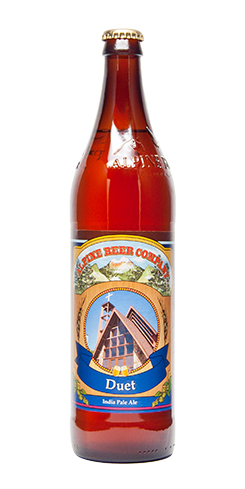
96
by Tracy Hensley
Duet
Alpine Beer Company
Brewery Impressions
by Alpine head brewer Shawn Mcelhenney
Who was responsible for this beer's recipe?
Duet was created by my dad, Pat.
What sets this beer apart from other examples within the style?
The beer has a perfect balance between malt and hops. It features just enough malt sweetness to let the Simcoe and Amarillo hops truly shine.
What makes this beer truly World-Class?
Duet is a great example of how IPAs can have amazing hop aroma and flavor without being overly bitter.
How popular is this beer among your faithful fans?
Since its inception, Duet has been a favorite of our customers and employees. So much so, it is hard to keep up with demand.

Judge's Second Opinion
by Tracy Hensley
Debate about the best IPA happens every day here in Portland, Oregon. The name of the brewer, brewery, or particular beer slowly evolves, but is consistently about IPAs rather than other styles. About once a week, a friend of mine tastes me on their latest IPA creation for feedback on how it compares to this or that brewery’s IPA.
Basically, the IPA style dominates the market’s focus, both for the public and brewers. All have made an obsession out of tasting and evaluating this particular style. Judging IPAs and Double/Imperial IPAs this year at the Craft Beer Awards in Bend, Oregon was the first time I tried over 80 IPAs in one day. The crash course and palate Olympics clearly illustrated the current trends of higher alcohol, aggressive dry-hopping and new hop strains.
While Alpine’s Duet could get lost in the shouting match of hop and alcohol in a competition, it excels at being an American IPA that one would like to grab a pint of and even go back for a second. It is an aggressively hopped IPA showcasing evolving hop complexity, especially in the aroma, yet avoids excessive bitterness and hop resin. Duet is currently brewed with Amarillo and Simcoe hops. Don’t get me wrong, Duet does have bitterness. However, it is a restrained bitterness considering the intensity of the hop aroma.
Alpine Beer Company has been around since 1999, and merged with Green Flash Brewing Co. in 2014. Duet has been brewed at Green Flash’s brewing facility since 2013. Thanks to the merger, beer geeks beyond San Diego County no longer have to bubble-wrap bottles in suitcases to share it. This is a good thing. San Diego (or California in general) is not lacking in world-class IPAs, and yet still, Duet shines. The example I tried was a tour de force of succinct and evolving aroma that retained balance. Duet is not just worthy, but exciting to try up against the other great IPAs in the United States.
29.
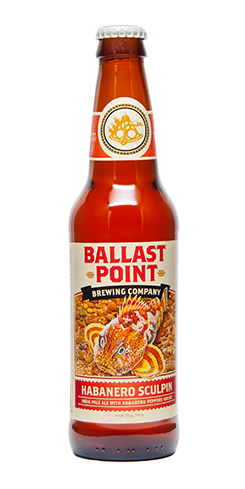
96
by Nelson Crowle
Habanero Sculpin
Ballast Point Brewing & Spirits
View Beer
Read Review
Brewer Q & A
 Brewery Impressions
Brewery Impressions
by Ballast Point Vice President and specialty brewer Colby Chandler
Who was responsible for this beer's recipe?
It all goes back to our roots as homebrewers. Home Brew Mart is how we started in 1992 and continues to crank out local brewers to this day. Longtime Home Brew Mart employee George Cautalin was brewing a Habanero IPA at his house that was delicious. It was one of the first beers I remember tasting that had a strong pepper flavor that didn’t kill you with pepper heat. A few months later, James Murray (then Director of Brewing) stumbled upon a self-induced mix of another brewery’s jalapeno beer and Sculpin IPA, at a festival in the Sierra Nevada Mountains. Knowing that the tropical fruity aromas of the habanero would make a terrific bridge and help highlight the juicy tropical aromas of Sculpin IPA, we infused the spicy orange pepper into the finished “beer-flavored” version of Sculpin and the age of liquid heat started at Ballast Point.
What sets this beer apart from other examples within the style?
The seamless aromatics between the Simcoe and Amarillo hops in Sculpin and the tropical notes of the Habanero work so well together. Bitterness from the IPA style also helps transfer the heat from the pepper onto the pallet leading to a slow and lingering heat. Also, like all of the Ballast Point beers, even with the challenge of using such a big flavored ingredient, there is still a balance to the drinking experience.
What makes this beer truly World-Class?
We pride ourselves on quality and the culture that we have developed over the past 20 years. Our lab has developed its own techniques, in regard to measuring quality and heat of the changing pepper sources and low dissolved oxygen levels in our packaging. Both of which keep that fresh pepper flavor and aroma stable and as consistent as we can get it for all the heat / hop heads around the world. Peppers are also a type of regional terroir for us in San Diego, highlighting the Southwest’s passion for spicy ingredients.
What is your favorite aspect of this beer (flavor, aroma, mouthfeel, etc.)?
The food pairing aspect of this beer is off the charts. Not necessarily a beer that many would order a pitcher of during a Happy Hour but when paired with the right food, a pint gets drained quickly and easily. A shrimp quesadilla with sour cream, crab rangoon and jerk chicken all go so well with Habanero Sculpin IPA. The creamy aspects of the dishes cut the heat and bitterness while also intensifying the heat of a spicy dish. Instead of the normal bridge pairing or contrast pairing, you now have the option of a condiment pairing – adding the habanero flavor to anything that you are eating.
How popular is this beer among your faithful fans?
We do a bunch of beers that polarize our fans. Roasted Serrano Califonia Kolsch, Indra Kunindra Curry Stout and the Thai Chili Wahoo Wit all have a shock factor at first and then you start to notice the flavors and how they blend with the base beer. That’s what entices you to keep coming back for another cold and spicy sip. You either really like it or really don’t. We are starting to notice a “Capsaicin Threshold Shift” in customer’s that have been drinking the pepper beers from the beginning. What was spicy hot in 2008 is way more acceptable now.
30.
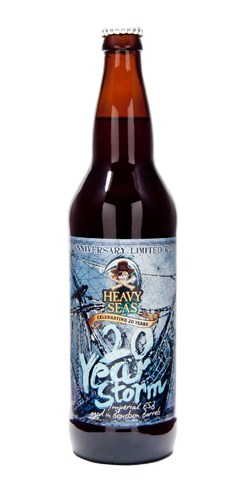
96
by Mike Castagno
20 Year Storm
Heavy Seas Beer
View Beer
Read Review
Brewer Q & A
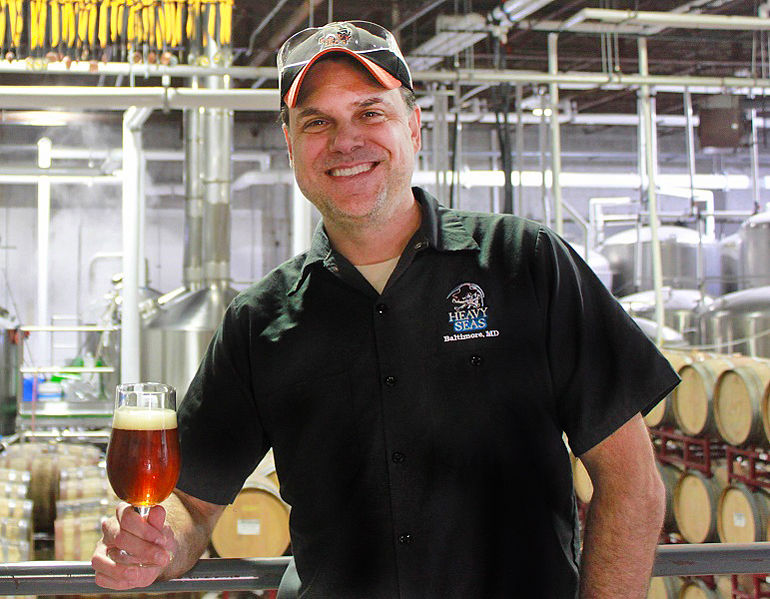
Brewery Impressions
by Heavy Seas brewmaster Christopher Leonard
Who was responsible for this beer's recipe?
It was a group effort. While I made the final decisions on the details, the general idea throughout the brewery was to brew a more potent version of Winter Storm as an homage to the beer that was the first ever beer branded “Heavy Seas.” I decided to use imported Optic malt as the base and tweak the hops more towards an English balance (Winter Storm is a decidedly American-hopped beer) and our (then) Brewing Team Leader, Chris Schultz, suggested the bourbon barrel aging.
What sets this beer apart from other examples within the style?
I don't think there really are any comparable beers out there that align with this style. The uniqueness of the beer, an Imperial ESB aged in bourbon barrels, is a rare find in and of itself.
What makes this beer truly World-Class?
We designed the beer to be complex yet balanced, with layers of flavors and aromas that worked together to create a cohesive beer. We employed extremely high quality ingredients. Our attention to detail on quality with this product was even more stringent than our year-round beers, with even more sensory and quantitative evaluations at every step in the process, from brewhouse to fermentation to barreling to filtration and packaging. Everything was executed (almost) exactly as planned.
What is your favorite aspect of this beer (flavor, aroma, mouthfeel, etc.)?
The balance is what I find most appealing. All of the components came together as well as (and possibly even better than) I had hoped – the nutty English malt, the herbaceous English hops with enough American hop assertiveness, vanilla and oak from the barrel-aging, the surprising drinkability considering the beer's heft and ABV. It's a harmonious beer.
How popular is this beer among your faithful fans?
Good question... It sold through fairly quickly, so the demand was there for sure. I know we received plenty of praise. The question, to me, is did we meet our fan's expectations? I believe in this case we definitely did.

Judge's Second Opinion
by Mike Castagno
Heavy Seas is a brewery near and dear to me as it was one of the big breweries in the Northeast that I was regularly exposed to and sought out when I moved to Delaware in the mid-2000s. Their Hop3, Red Sky at Night, Loose Cannon and many others helped shape my budding interest in craft beer at that time.
ESB (Extra Special Bitter) is a style that I cut my teeth on as a homebrewer and one that I have always been passionate about due to its complex flavor profile while paradoxically still being quite quaffable. This rich flavor and high drinkability made me fall in love with the style.
This imperial ESB on Bourbon Barrel is almost as if the beer was tailored for me as it combines all of my favorite things, oak, whiskey, caramel and earthiness. This beer does it all and keeps on delivering as it warms in your hand. Cheers!
31.
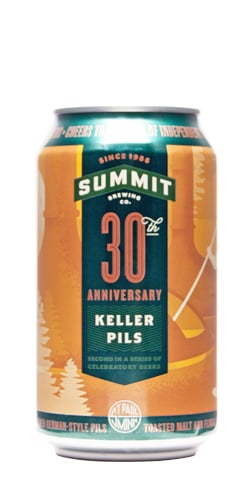
96
by Owen Ogletree
30th Anniversary Keller Pils
Summit Brewing Co.
View Beer
Read Review
Brewer Q & A
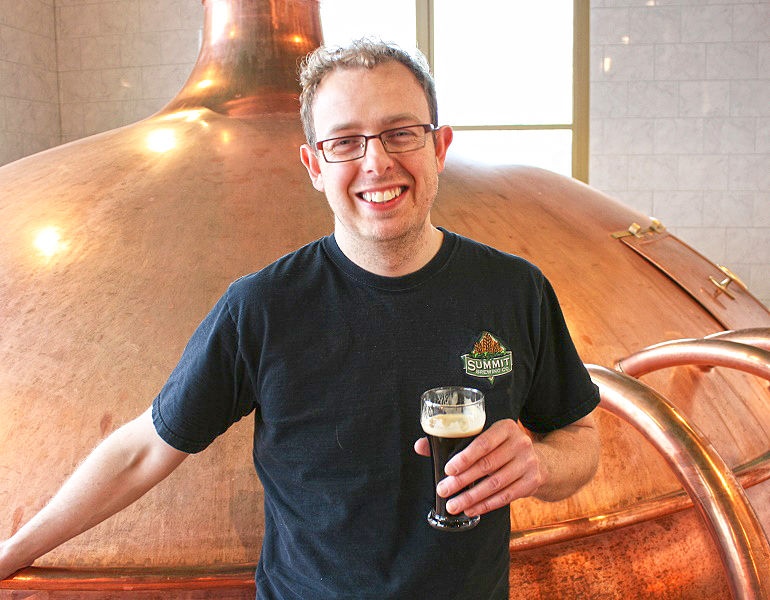
Brewery Impressions
by Summit head brewer Damian McConn
Who was responsible for this beer's recipe?
I was.
What sets this beer apart from other examples within the style?
It is brewed in a traditional 100% German copper brewhouse, unpasteurized, naturally carbonated and cold matured for a minimum of 60 days.
What makes this beer truly World-Class?
100% Heritage malting barley from Germany plus a unique combination of traditional and modern German hop varieties all combined with an obscure yeast strain sourced from Germany.
How popular is this beer among your faithful fans?
Feedback has been very positive with many requests to see the return of this beer. Stay tuned for more news on this front!

Judge's Second Opinion
by Owen Ogletree
Summit Brewing's second release in a series of four anniversary beers, 2016's 30th Anniversary Keller Pils epitomized the brewery's core philosophy that focuses on "tradition and progress, innovation and heritage." This crisp, flavorful, unfiltered German-style pilsner showcased European Barke variety malting barley that was processed at Weyermann Specialty Malting in Bamberg, Germany. Traditional German Tettnang hops were enhanced with a touch of modern Hallertau Melon variety to provide a citrus nuance.
Summit worked with Oregon's Wyeast Labs in sourcing a special Munich Lager yeast strain for this celebratory brew. Patient, traditional fermentation methods involving two weeks of cool fermentation and six additional weeks of cold lagering allowed the yeast to ferment the wort slowly and have time to re-metabolize any non-lager fermentation components – producing a superbly clean, malty-sweet, slightly honey-like beer – all balanced by perfect aroma, bittering and flavoring hop additions.
Summit founder Mark Stutrud's initial brewing goal revolved around a desire to reintroduce and refine traditional European brewing methods that created the handcrafted beers that were enjoyed around the Midwest before prohibition. A pioneering American craft beer producer, Summit Brewing Company was launched in 1986 in St. Paul Minnesota and now turns out around 14 varieties of appealing craft beer each year. Visitors can follow-up a free brewery tour with pints or flights in the Summit Beer Hall taproom and grab a bite from a local food truck.
32.
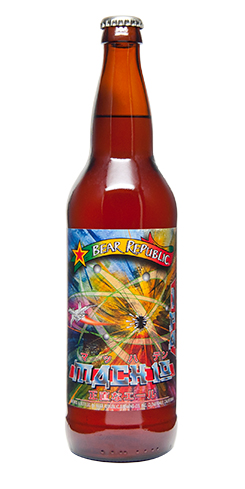
96
by Nelson Crowle
Mach 10
Bear Republic Brewing Co.

Brewery Impressions
by Bear Republic master brewer Peter Kruger
Who was responsible for this beer’s recipe?
Mach 10 evolved out of a beer that I first made at Ruth McGowan’s Brewpub (now called Cloverdale Ale Company). In this iteration, I called it Warp Ten. We tweaked the recipe afterwards then brewed it here at the Bear.
What sets this beer apart from other examples within the style?
This Double IPA walks the line between an American Double IPA and an English Strong Ale. It is hopped equally and aggressively with Cascade and First Gold, which are an English dwarf hop variety that are a cross between Whitbread Goldings and a dwarf hop. The aroma is a blend of American hop characteristics of citrus and marmalade, and the woody, spicy and floral characteristics of an English hop. A simple malt bill of two-row base malt and light crystal malt imported from England provide a malty and full counterpoint to the full hop character.
What makes this beer truly world-class?
Mach 10 is different than most others in that the hop profile created by blending new world and old world hops is unique and surprising. These hop characteristics are typically showcased separately. The synergy really works.
How popular is this beer among your faithful fans?
Along with our other Double IPA offerings, Mach 10 has a loyal following. We typically release this in the spring and it provides the perfect jump start to spring fever.
33.
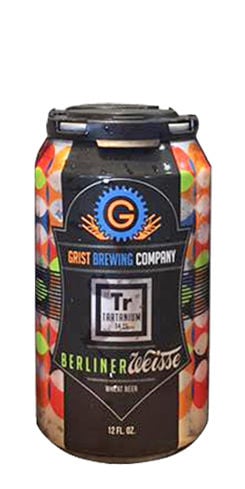
96
by Michael Heniff
Tartanium Berliner Weisse
Baxter Brewing Co.

Brewery Impressions
by Grist founder and head brewer Rob Kevwitch
Who was responsible for this beer's recipe?
The recipe, like all of our recipes, comes from input from all of the brewers. The process for souring the Tartanium is just as important as the recipe and that is constantly being tweaked by all of us so we can achieve our desired flavor with the most efficient method possible.
What sets this beer apart from other examples within the style?
Traditionally the Berliner Weisse style is low ABV. However, we do our rendition at 5.4% ABV so that it's both drinkable and also gets the job done.
What makes this beer truly World-Class?
I'm not sure. We just make good, clean beer. You, the consumers, deemed it World-Class and we are truly flattered with that label.
What is your favorite aspect of this beer (flavor, aroma, mouthfeel, etc.)?
My favorite part has to be the punch-you-in-the-face tartness. I love when people aren't familiar with the style and say, "just give me the weisse." Oh, I'll give you the weisse – enjoy that wake up call!
How popular is this beer among your faithful fans?
Very popular. This is probably our third-best seller in the taproom, our best seller in cans, and by far the most sought after beer we take to festivals. Folks love that we are willing to play with it by adding nontraditional syrups.
34.
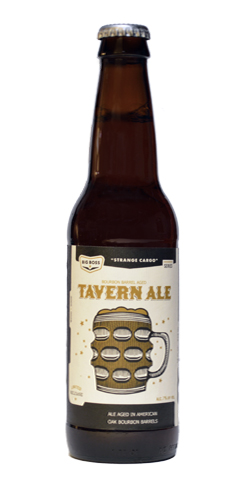
96
by Sal Mortillaro II
Barrel Aged Tavern Ale
Big Boss Brewing Co.
View Beer
Read Review
Brewer Q & A
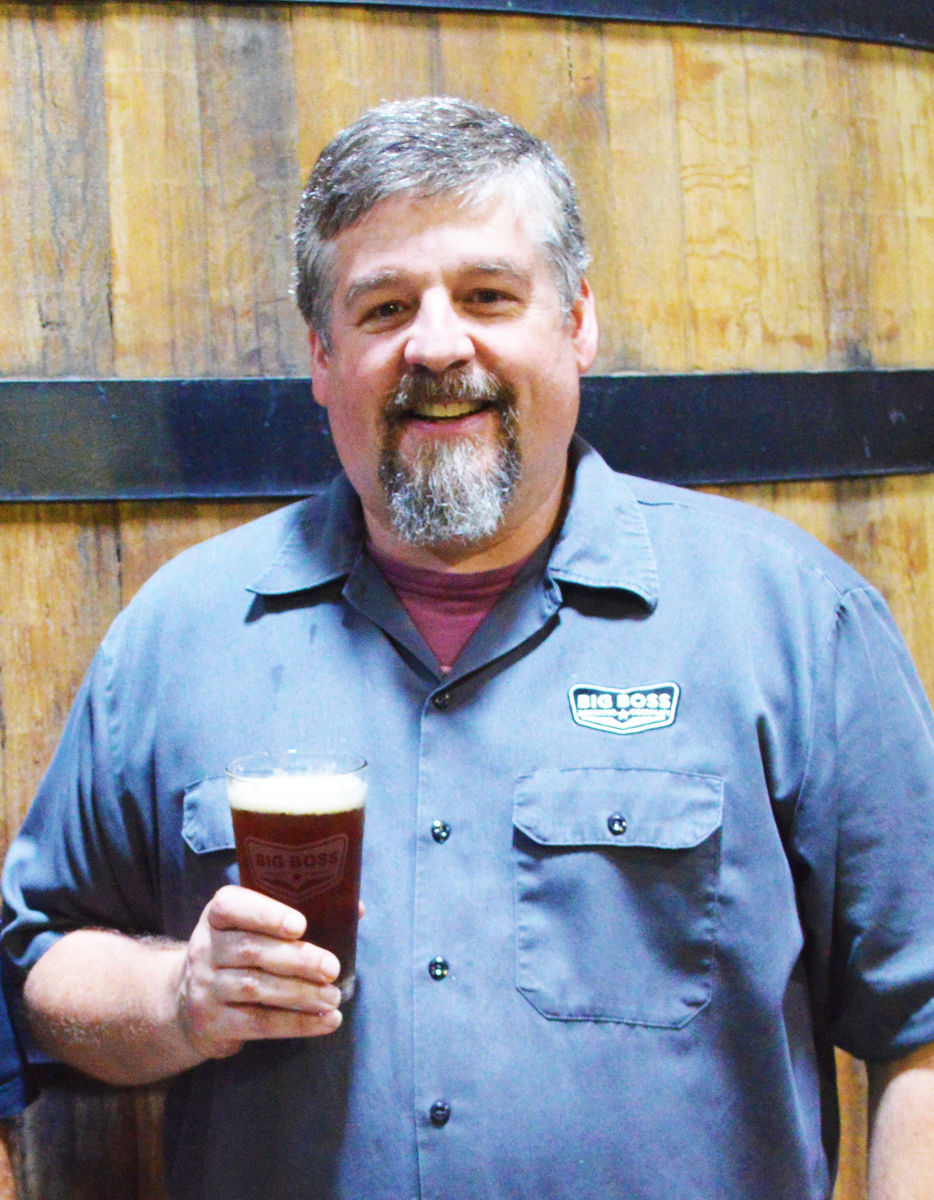
Brewery Impressions
by Big Boss head brewer Brad Wynn
Who was responsible for this beer's recipe?
I developed this beer to pay homage to my brewing past. It is my interpretation of a Christmas Ale we made at Wild Goose 20+ years ago.
What makes this beer truly World-Class?
I believe it is world class because my brewers execute a flawless base beer, which happens to be great on its own and they know how long to age it.
What sets this beer apart from other examples within the style?
Nothing good happens without a great deal of sensory analysis. A couple things that set it apart are one, what it is not: it's not a Bourbon barrel aged stout and I like the way the biscuity malt backbone from Marris Otter malt complements the freshly emptied barrel taste we get from the Bowman bourbon barrels we age it in.
How popular is this beer among your faithful fans?
Tavern Ale and now, more importantly, Barrel Aged Tavern Ale have gone from being available only in our taproom to great seasonal sellers for us.

Judge's Second Opinion
by Sal Mortillaro II
This was such a wonderfully delightful beer for me to partake in. Fortunately I had one, lone BBA Tavern Ale in my fridge that my assistant gave me after the beer was blindly judged. I am glad I am able to leisurely sip on it while I write my second thoughts on it.
Big Boss Brewing categorizes this beer as part of their “Strange Cargo” series. Personally, this speaks to me as a homebrewer of the strange and wild I’ve brewed many a beer that crosses style thresholds. When I drank this beer I immediately picked up on its unique characters that touched here, touched there, but never really landed anywhere, but rather just kept on gliding; “Strange Cargo” indeed. Making beer is unique in that scientific driven catalysts of brewing methodology lead to an artistic outcome of the beer itself and this beer is a masterpiece.
This particular beer has the character of a colorful English chap wearing a cowboy hat complete with chaps and spurs. Forward English style malt with an American woody and whisky barrel-aged note meld together seamlessly. This beer is inviting and warm, sweet, earthy, tasty and satisfying with several well-interwoven layers of flavor, all the while being easy to drink.
Since becoming a dedicated drinker of craft beer in 2001, I have seen several beer trends come and go. One of those current trends is the use of whiskey barrel-aging. There are great barrel-aged beers out there and some not-so-great barrel-aged beers out there. Of course, almost exclusively barrel-aged beers will be stouts and porters as their flavor profiles seem to be a natural fit for the barrel use. An English-style beer though? This is where the artistry mentioned above comes in; Big Boss Brewing had a strange vision and brought it to fruition exceptionally well.




